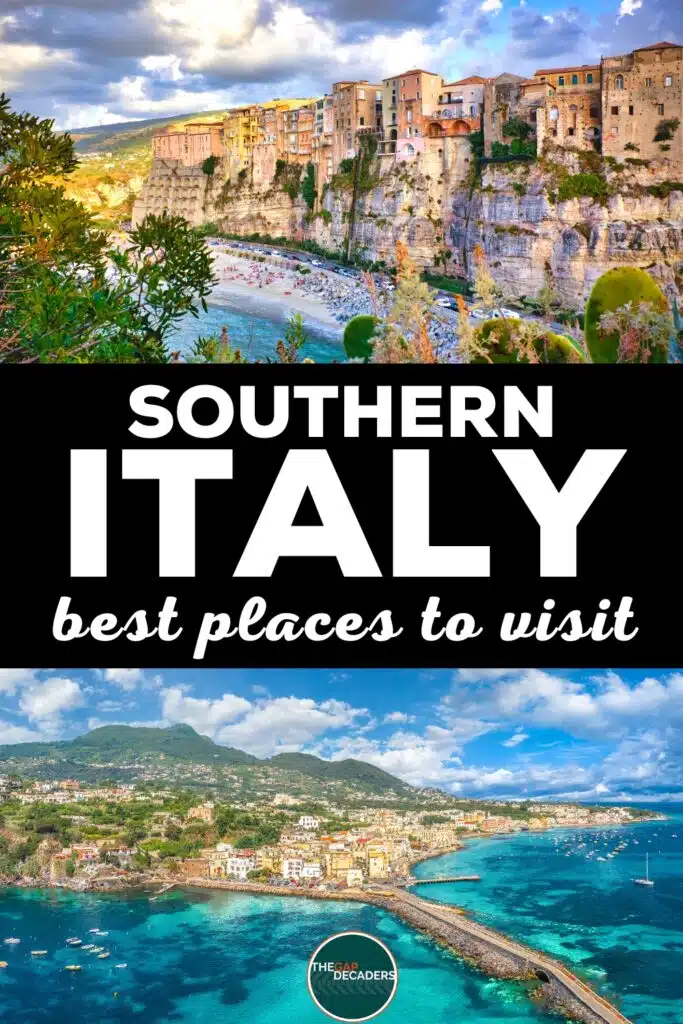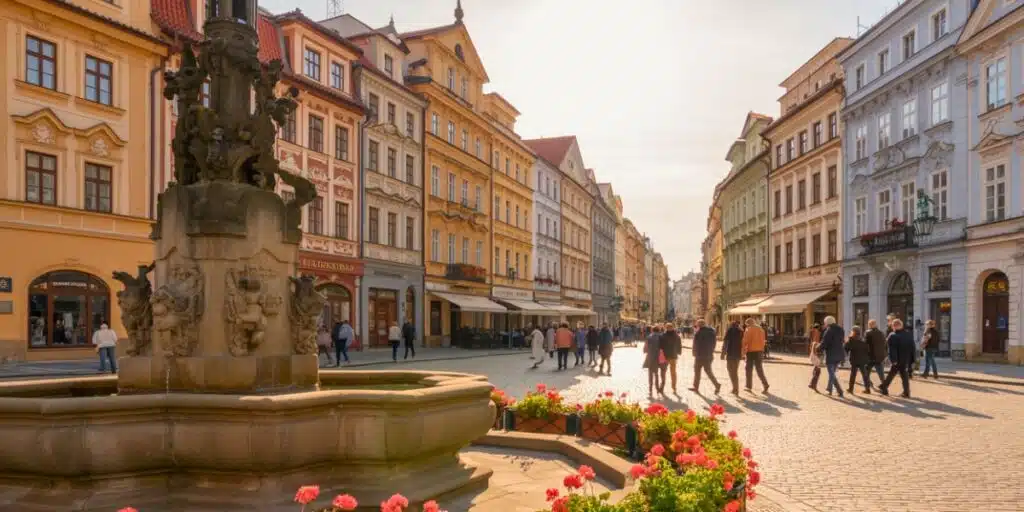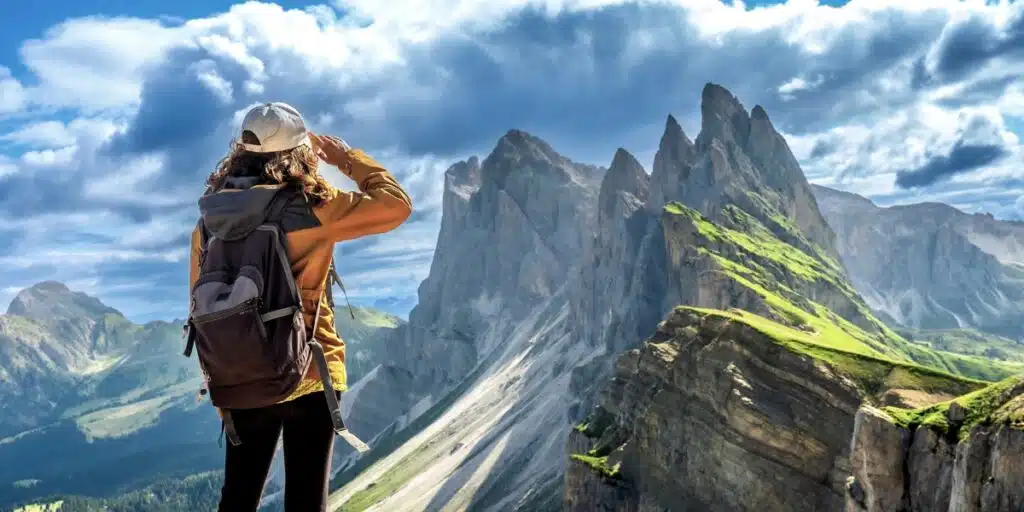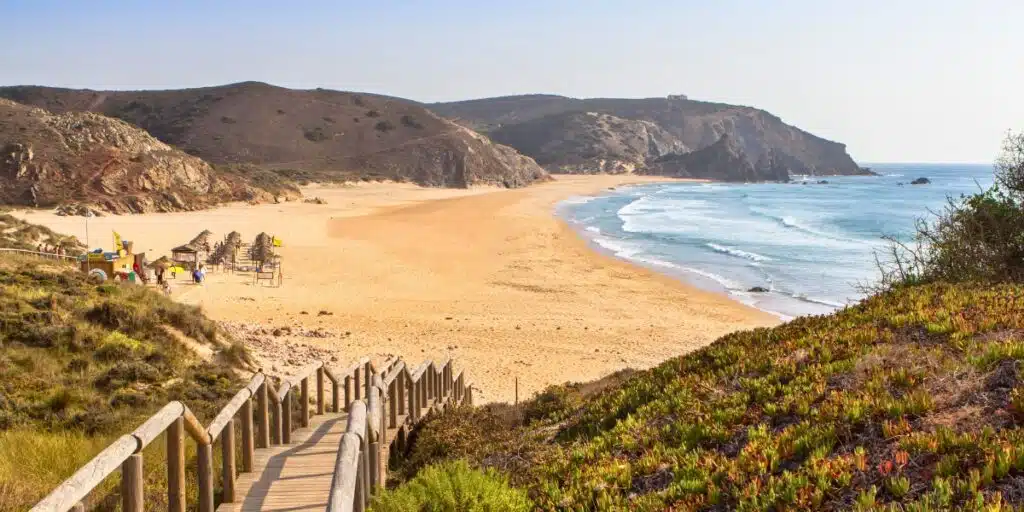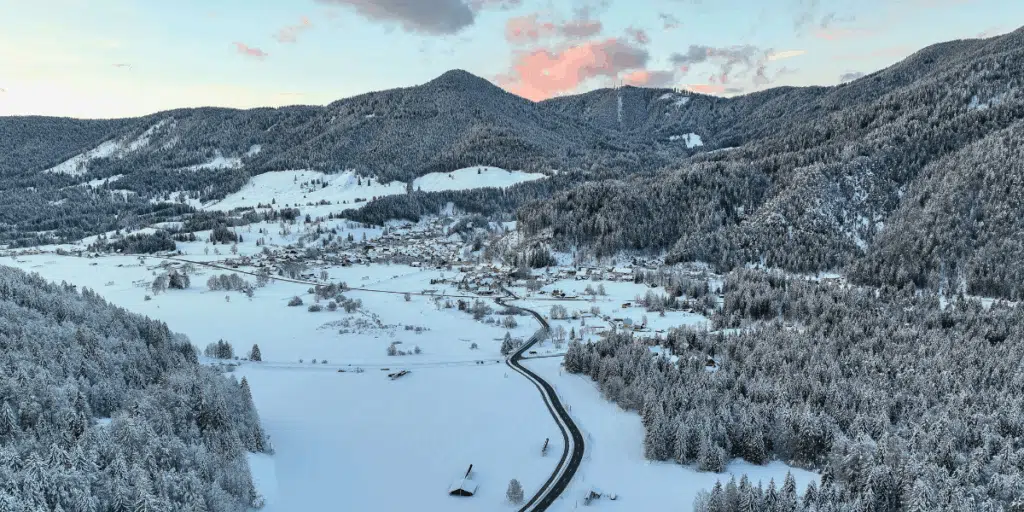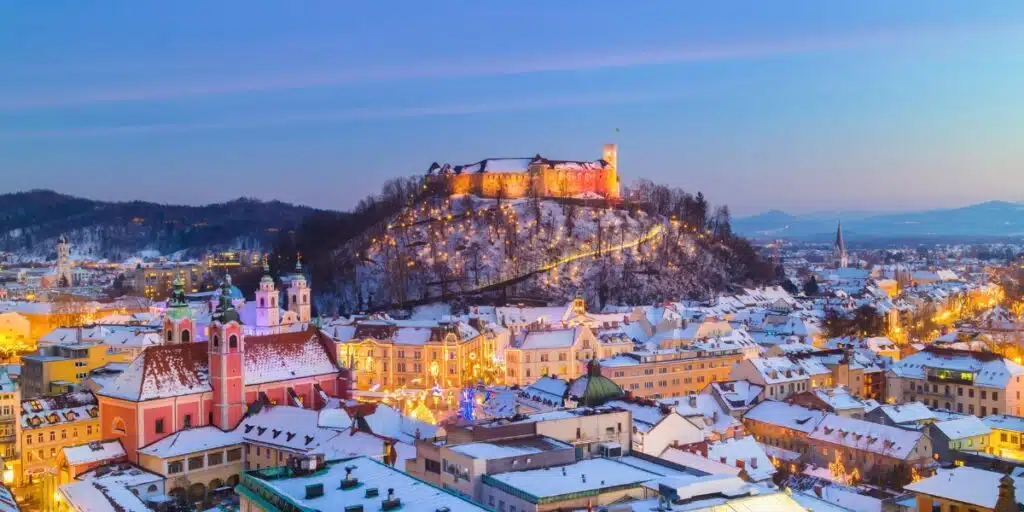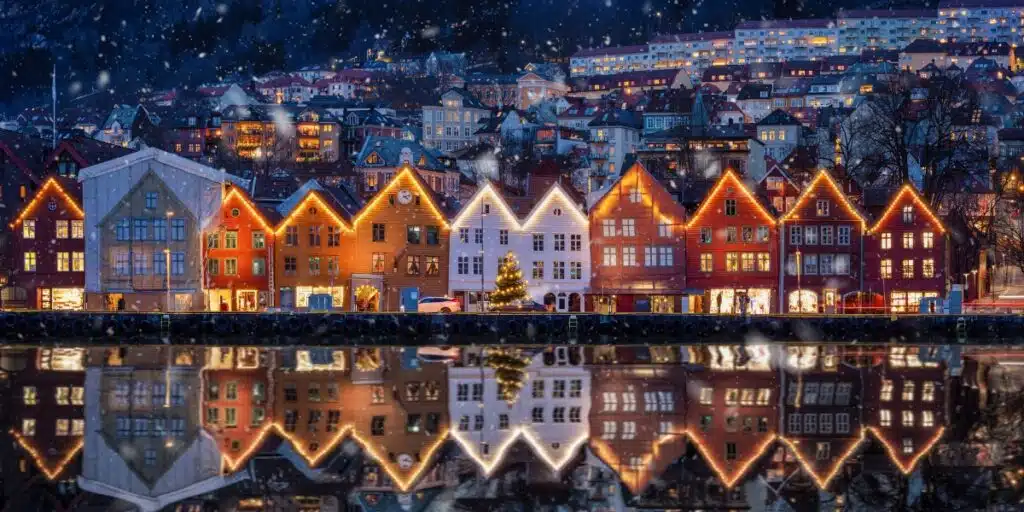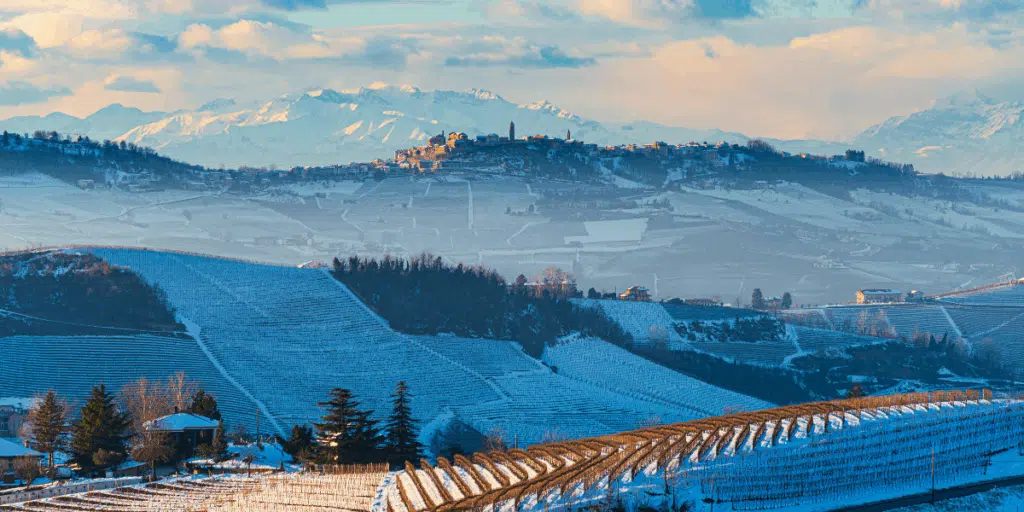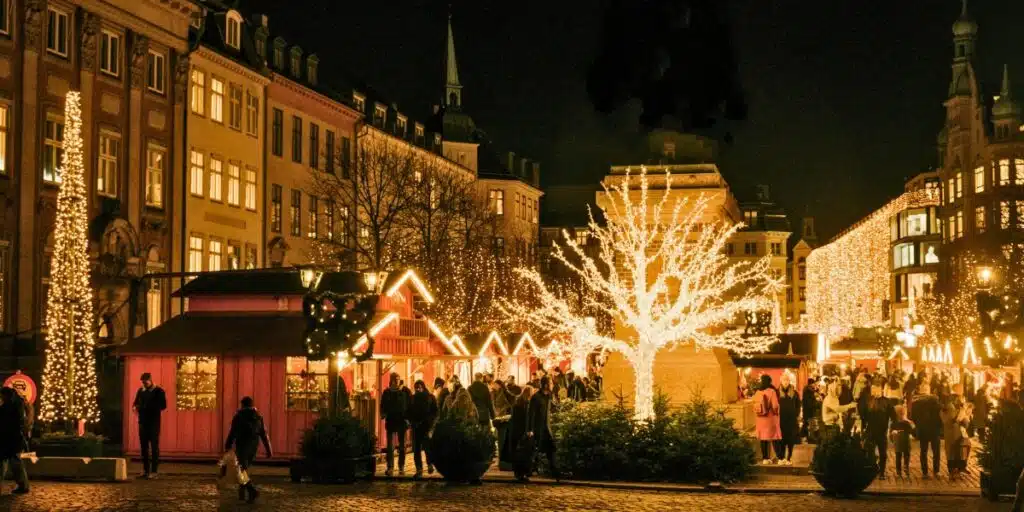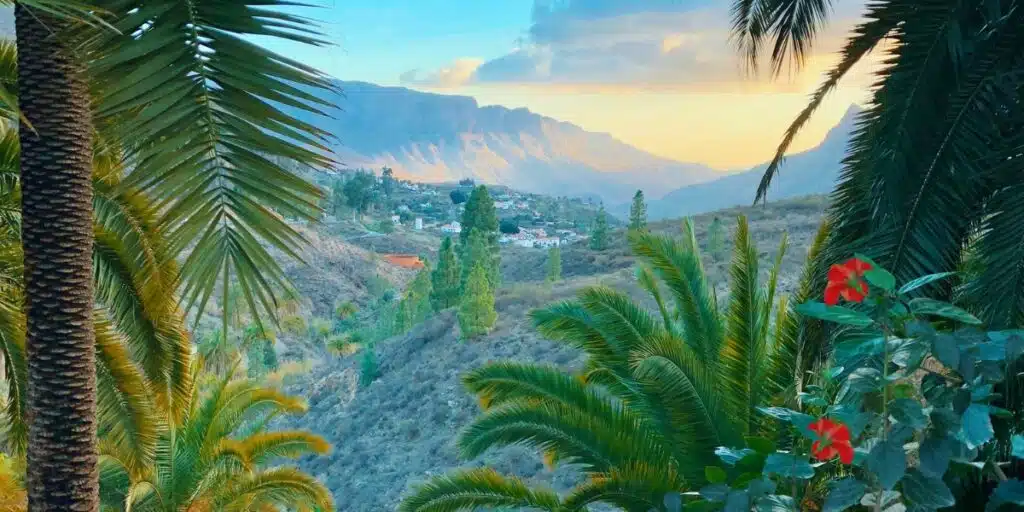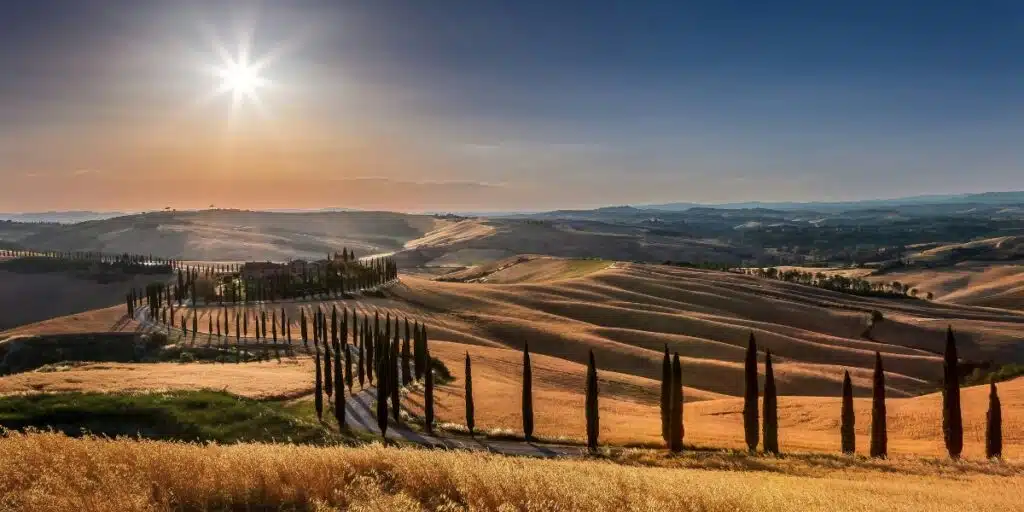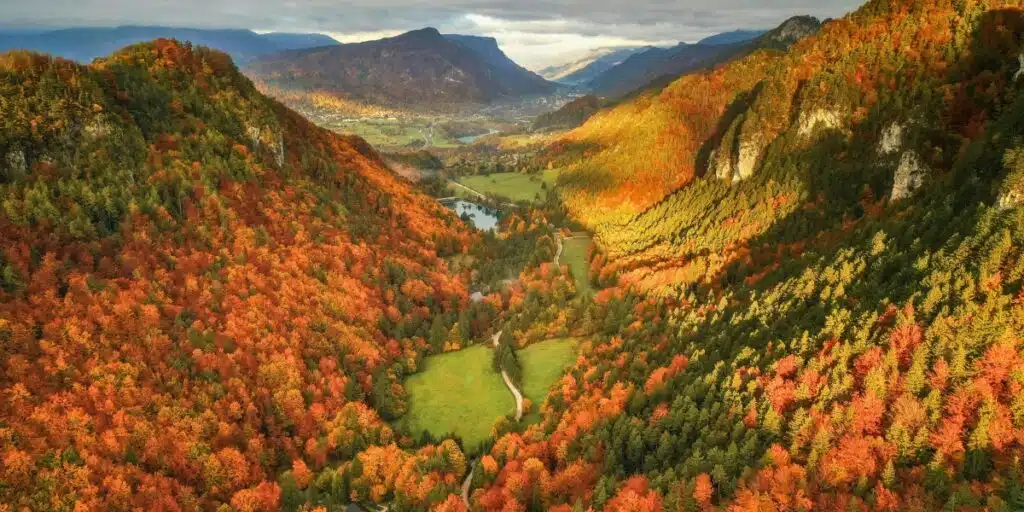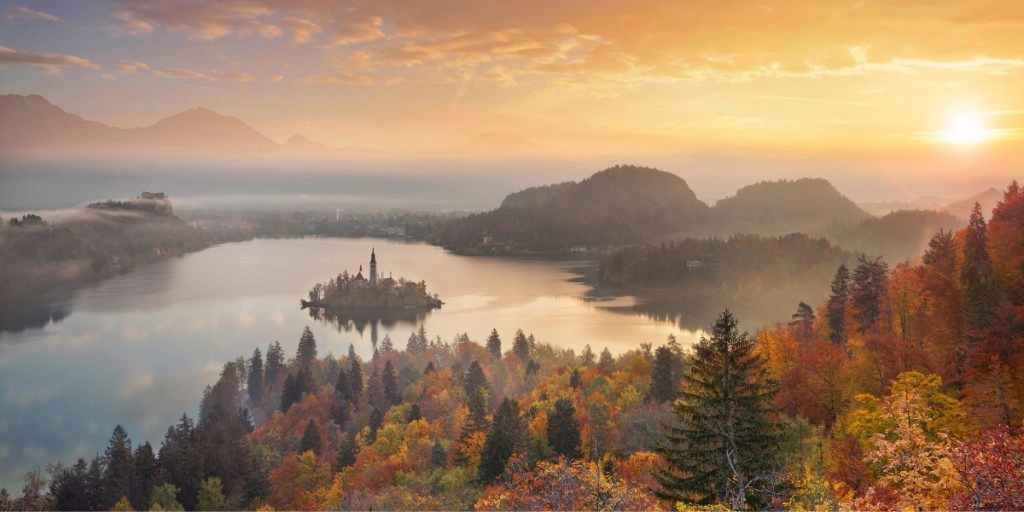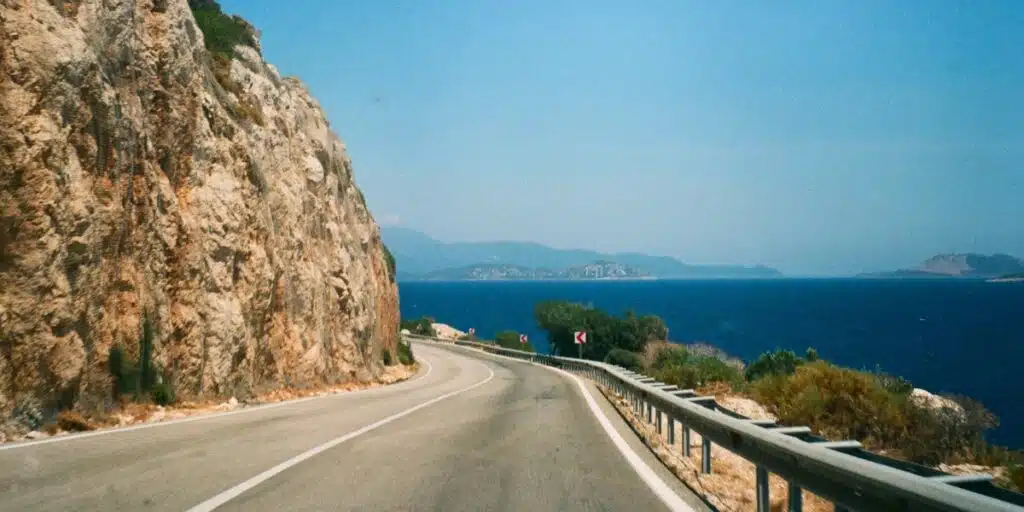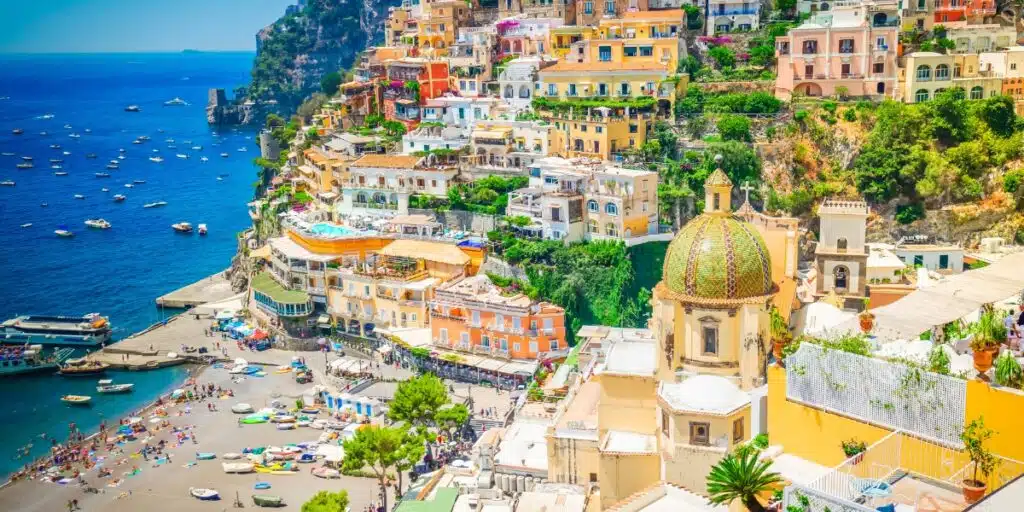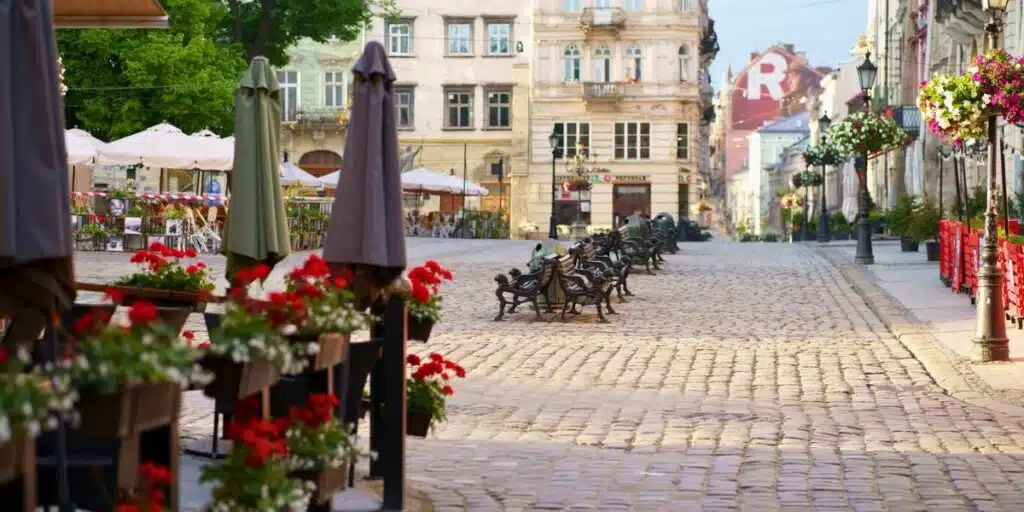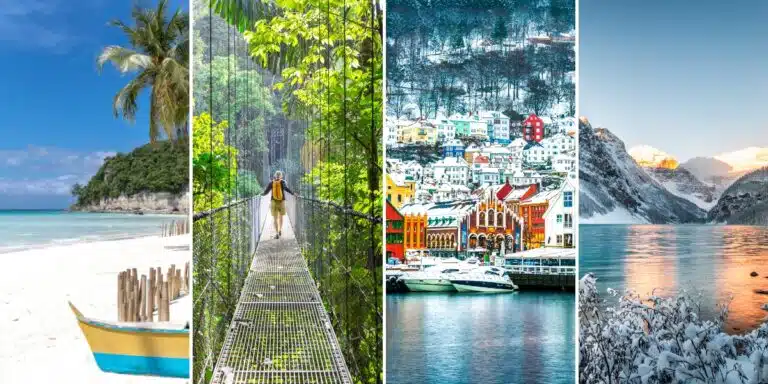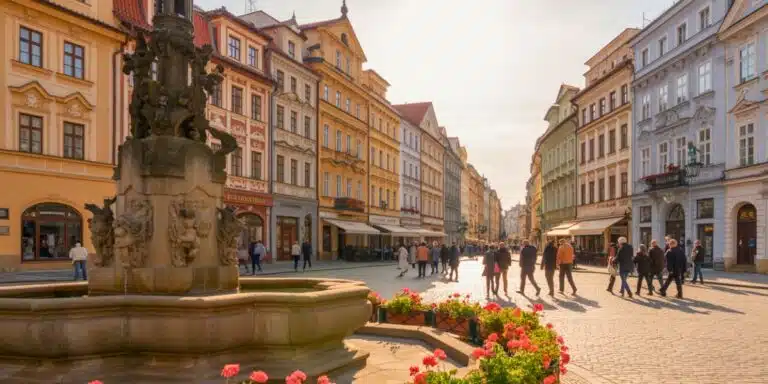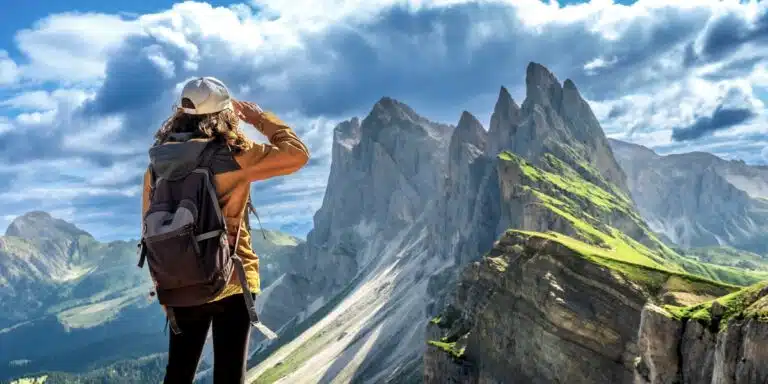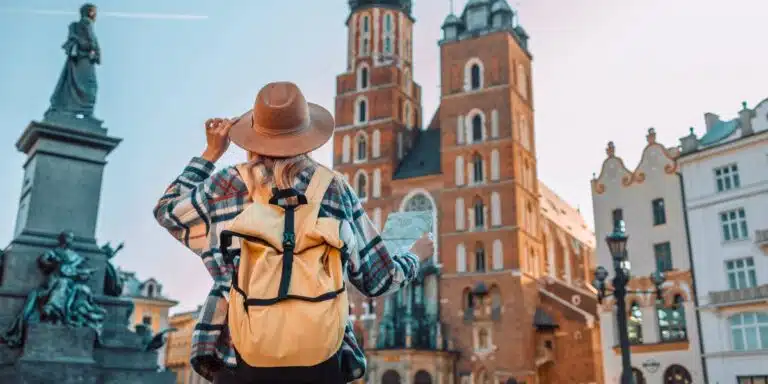This post may contain affiliate links, from which we earn an income. Click here to read our affiliate policy.
The Best Places to Visit in the South of Italy
One of the oldest inhabited regions in Europe, Southern Italy is awash with archaeological sites, beautiful small towns, picture perfect beaches, and local culture.
Known for its warm Mediterranean climate, diverse landscapes, history influenced by the Greeks, Romans, Arabs, and Normans, and its delicious cuisine, Southern Italy is rapidly becoming one of Europe’s most popular destinations.
One of our favorite places in Europe to visit, we share the very best Southern Italy destinations, from heel to toe and everything in between, including the well-known big hitters and a few lesser-known hidden gems.
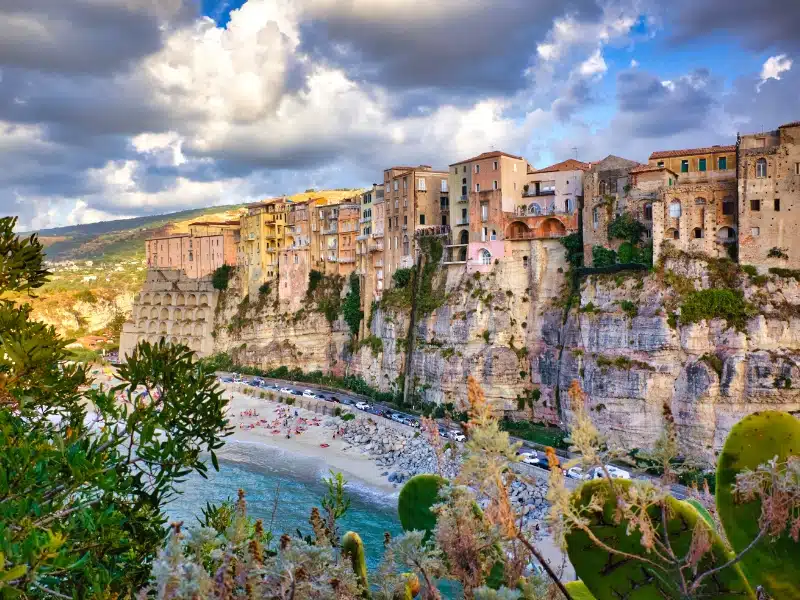
Italy Travel Resources
Here are the services we use and recommend for traveling in the Italy;
Where is Southern Italy?
Southern Italy, also known as Meridione or Mezzogiorno in Italian, is a macroregion of Italy made up of the regions of Abruzzo, Apulia (Puglia), Basilicata, Calabria, Campania, Molise, and Sicily.
The regions of Southern Italy form the lower part of the Italian ‘boot’, including the ankle which is Campania, the toe of Calabria, the arch of Basilicata, and Puglia which makes up the heel. Molise is located to the north of Puglia and Abruzzo is further north still.
The island of Sicily is separated from Calabria by the narrow Strait of Messina, and the heel and toe are parted by the Gulf of Taranto.
RELATED POST: The Ultimate Bucket List Italy Road Trip
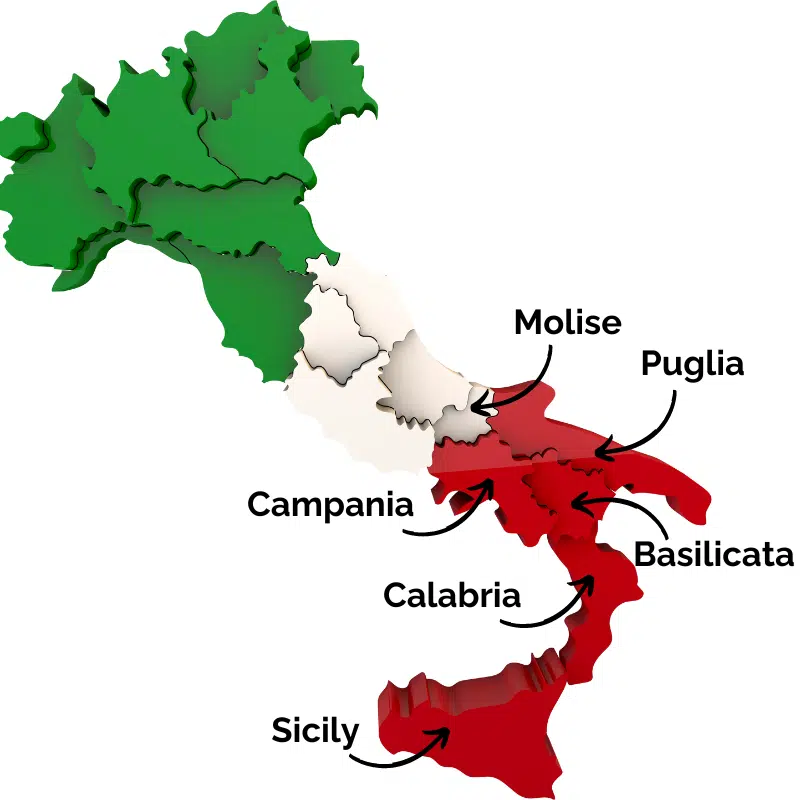
Is this your first time visiting Italy? Get all the information you need in our Italy Travel Guide, including what to pack, the best time of year to go, getting there, and practical tips to help you have the best trip!
Abruzzo
The most northerly and largest region in Southern Italy, Abruzzo has a diverse landscape made up of an Adriatic coastline and the Apennine Mountains. National parks and nature reserves cover much of its rugged and forested interior and there are a number of hilltop towns dating to the medieval and Renaissance periods.
Civitella del Tronto
Civitella del Tronto, situated in the Gran Sasso e Monti della Laga National Park of Italy, is a remarkable cliff-top town that boasts the largest fortress in Italy and the second largest in Europe.
The village is considered one of Italy’s most beautiful, with its striking fortress dominating the hillside above the charming village below, surrounded by high mountains.
The fortress, built in the 16th century and transformed by Philip II of Habsburg, King of Spain, was the last to fall to the armies of Emanuele I. Although largely destroyed by the locals, a major renovation project took place between 1975 and 1985, and the fortress is now open to the public.
After admiring the fortress and its views, visitors can explore the gorgeous small town with its stone buildings dating from medieval and Renaissance times, narrow stone-paved roads, and interesting architectural details on the houses.
In addition to its fortress, the town has some important religious buildings, such as the Abbey of Santa Maria in Montesanto, which has been recently restored to its 13th century state and is one of the most beautiful monuments in the area.
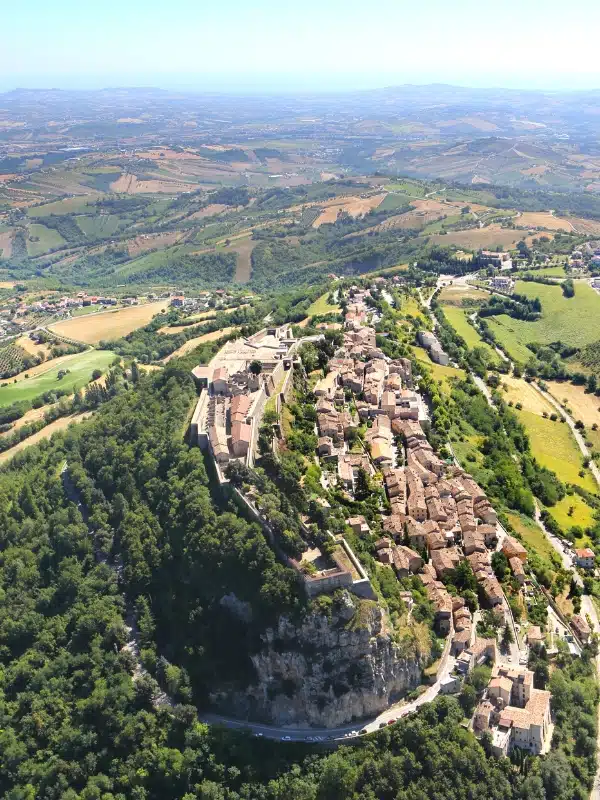
L’Aquila
L’Aquila, the capital city of the Abruzzo region, is a beautiful medieval town surrounded by the stunning Apennine Mountains, with the Gran Sasso d’Italia massif to the north east.
The town is situated on a hillside in the middle of a narrow valley and is a maze of narrow streets, lined with Baroque and Renaissance buildings, churches, and elegant piazzas.
Earthquakes have marked the history of L’Aquila, as the city is situated partially on an ancient lakebed that amplifies seismic activity. Despite being less than an hour-and-a-half drive from Rome, the city is sparsely visited by tourists but is a hidden gem waiting to be discovered.
Don’t miss the Fountain of the 99 Spouts and the Renaissance castle of Forte Spagnolo during your visit, and if you have time, the nearby Navelli plateau is worth a visit for its fields of saffron crocuses which give Abruzzo its name: ‘the land of yellow gold’.
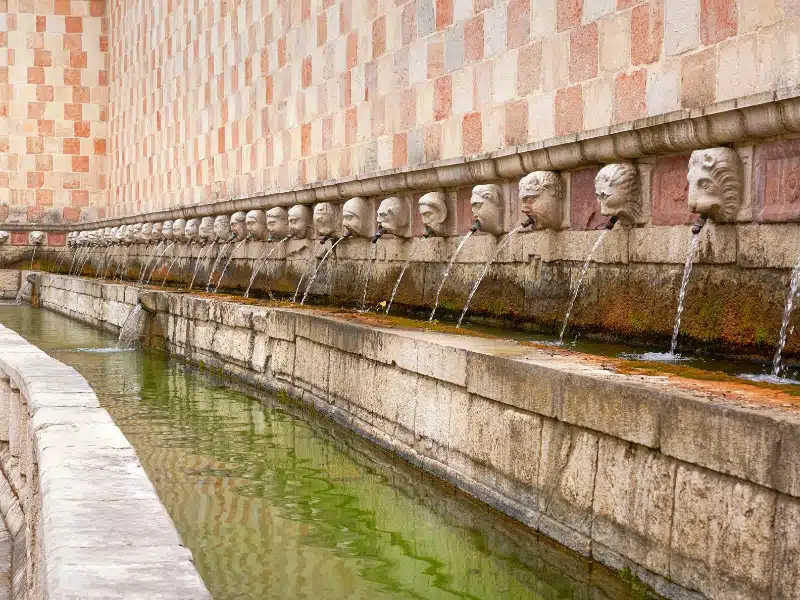
Scanno
Scanno is set deep in the Sagittario Valley, high in the Abruzzo mountains, and is perhaps most famous for its glistening heart-shaped lake, Lago di Scanno. If you’re visiting in summer, the lake is a busy camping spot where locals and visitors alike go to swim and paddle board in the turquoise waters, before enjoying various music festivals and hot summer night parties.
Away from the lake, Scanno appears much like any other Italian hill town rising from the mountain in a jumble of buildings and towers. Spend some time here and you’ll find a fantastically well-preserved medieval mountain town with a beguiling history.
The women of the town in their traditional dress and distinctive headgear have been captured and preserved on camera by some of the best photographers of the 20th century, including Cartier-Bresson and Giacomelli, and were known as the most beautiful women in Italy. Visit the higgledy-piggledy, tiny Museo della Lana to understand the very special photographic history of Scanno.
Amongst the beauty of Scanno’s medieval alleys and honeyed buildings, you will find workshops making and selling traditional local crafts, such as lace and jewelry as well as a handful of good restaurants and bars. For authentic local food, head to Ristorante Alla Fonte by the church.
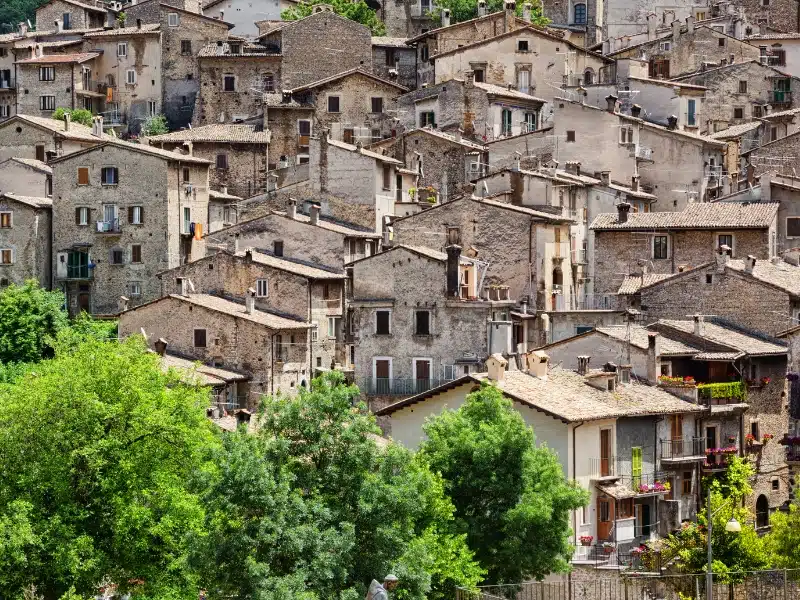
Trabocchi Coast
Undoubtedly one of the most captivating Italian territories overlooking the Adriatic Sea is the Coast of the Trabocchi, known as ‘the pearl of Abruzzo’.
The main attraction of this coast is the trabocchi, primitive yet complex fishing platforms constructed of wood that sit over the water. The historic structures resemble giant wooden crabs, or as noted poet Gabriele D’Annunzio wrote, ‘colossal spiders’, with protruding rods and an overall unique form.
Using pulleys and ropes, the elevated arms with nets attached to them are raised and lowered to catch the day’s fish from the clear water below. Today, only 23 remain, and some have become rustic restaurants.
The Costa dei Trabocchi includes the towns of San Vito Chietino, Rocca San Giovanni, Fossacesia, and Vasto, with the trabocchi tucked in coves or on points, accompanied by pebble beaches with crystal-clear water.
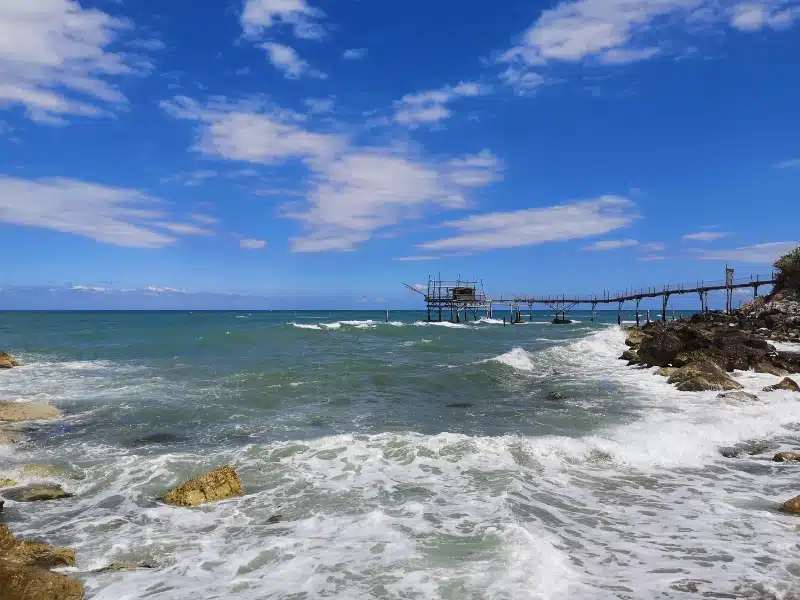
Make sure you have travel insurance you can trust when visiting Italy. We recommend True Traveller for their 5-star TrustPilot reviews, variety of cover options, best activities cover as standard, great prices, and excellent service.
Basilicata
Basilicata is a region of striking landscapes, characterized by rugged mountains and virgin forests, with occasional breaks for quaint villages and picturesque towns. Located in the instep of Italy’s boot, this fertile land was a battleground for ancient empires for centuries but is now a charming coastal holiday destination.
Castelmezzano
Castelmezzano is one of the most beautiful hidden treasures of Basilicata. It is also one of the two stations for the Flight of the Angel, the highest zipline in the world, which connects with Pietrapertosa on the opposite side of the valley, surrounded by the dramatic Lucanian Dolomites.
Entering the small village is an unusual experience, as you pass through a tunnel dug into the rock after crossing a spectacular gorge. Upon exiting the tunnel, Castelmezzano appears, perched and protected by the surrounding mountains.
The urban structure of Castelmezzano is typically medieval, with a concentric cluster of houses with sandstone slab roofs set in a rocky basin. Walking through the historic center is particularly evocative due to the presence of buildings cut into the bare rock and numerous steep stairs that open up between the alleys.
Of note is Santa Maria dell’Olmo with its majestic Romanesque style façade, which stands in Piazza Caizzo at the heart of the town.
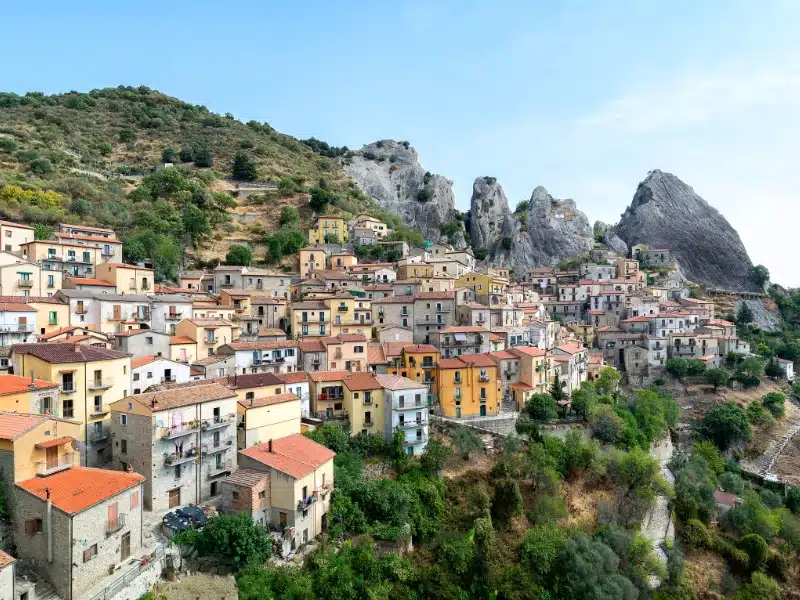
Matera
A unique and unforgettable tourist destination in Basilicata, Matera is renowned for its extensive cave dwellings, the Sassi di Matera. Visitors can stay in caves, wander through the picturesque lanes alongside the cave-filled cliffs, and learn about the fascinating history of this place.
The caves of Matera have been inhabited for centuries, with some humble and some smarter residences. However, by the early twentieth century, the area was known for poverty. Until the 1950s, hundreds of families were still living crowded into cave houses, leading to squalor and malaria-ridden conditions.
The situation became a national scandal in Italy, and the cave residents were eventually moved by law to modern buildings on the plateau above. By the 1980s, the abandoned caves of Matera were no longer scandalous but fascinating reminders of the past.
Some of the wealthier residents moved back and renovated old cave houses and in 1993, Matera was made one of Italy’s newest UNESCO World Heritage sites for being ‘the most outstanding, intact example of a troglodyte settlement in the Mediterranean region, perfectly adapted to its terrain and ecosystem’.
Since then, Matera has become increasingly popular as an off-the-beaten-track tourist destination. More and more old cave houses are being converted into comfortable modern dwellings, hotels, B&Bs, and restaurants, and visitors can take guided tours of the sassi and visit historic reconstructions of cave life.
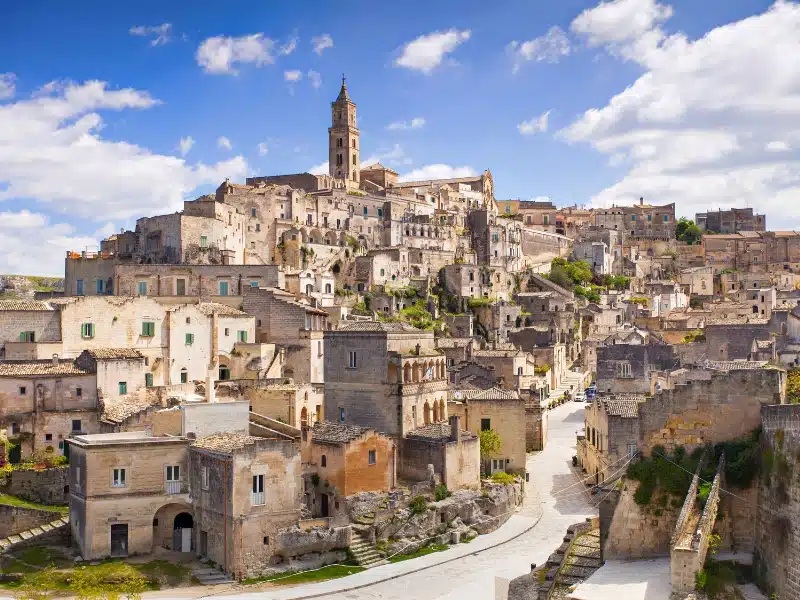
Pollino National Park
The Pollino National Park, covering 1,925 square kilometers, is the largest natural park in Italy. Its unique landscapes and complex environments earned it the status of a UNESCO World Heritage site in 2015.
The protected area consists of the Pollino and Orsomarso massifs, home to some of the highest peaks in southern Italy, including Serra Dolcedorme, standing at 2,267 meters and offering stunning views of the Tyrrhenian and Ionian Seas.
Make sure to seek out the oldest tree in Europe, a Loricate Pine that is around 1,230 years old, and the natural thermal pool of Grotte Delle Ninfe in Cerchiara, which is rich in minerals and mud, ideal for skin treatments.
The park’s waterways feature deep gorges and wide valleys, perfect for sports such as rafting, canyoning, and canoeing. Nature enthusiasts can indulge in trekking, hiking, and mountain biking, with some excellent trails just waiting to be explored.
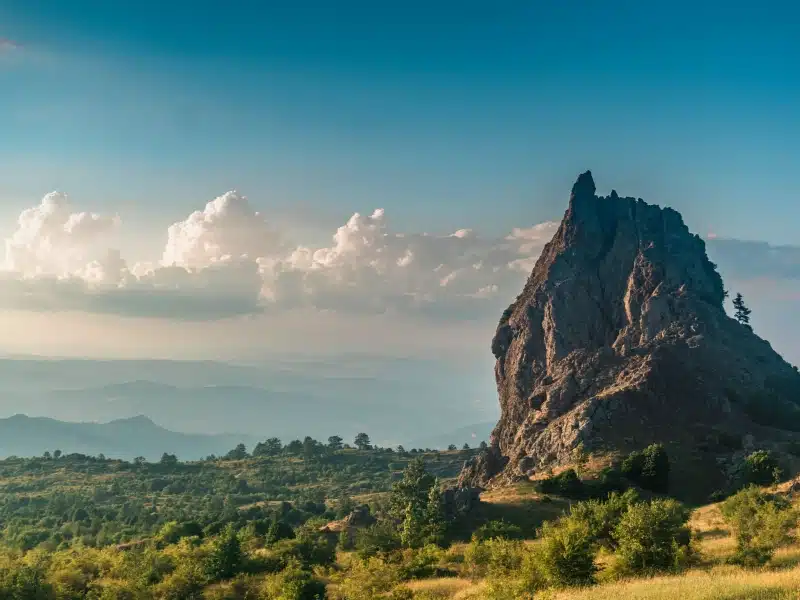
Rotondella
The subject of a thousand Instagram posts, the charming village of Rotondella is easily recognizable from above, with its houses nestled closely together and its streets winding up the hill in a distinctive spiral.
Known as ‘the balcony on the Ionian Sea’ for its breathtaking views of the stunning Lucanian Sea, Rotondella remains one of Basilicata’s hidden gems despite its photogenic fame.
Rotondella has a long and rich history that dates back to ancient times when it was first inhabited by the indigenous population of the region. Over the centuries, it came under the influence of different civilizations, including the Greeks, Romans, Byzantines, Normans, and Aragonese.
In the medieval period, Rotondella thrived as a crucial agricultural center, renowned for its olive groves and vineyards. Its strategic location along ancient trade routes also contributed to its historical importance, and the legacy of this can be seen in the historic center which is characterized by narrow cobblestone streets, ancient buildings, and charming squares.
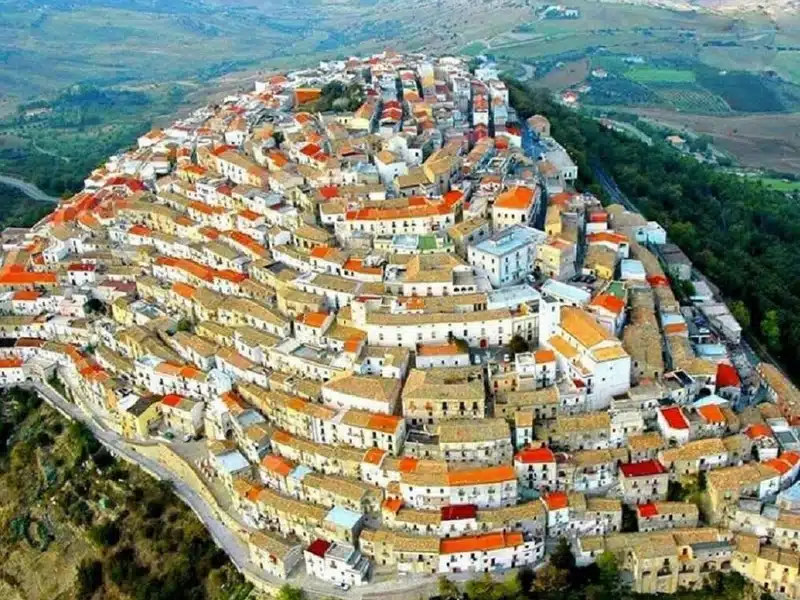
Looking for the best SIM card deals in Europe for your trip? Check out our guide to the best data SIMs in Europe and get the best deal for your trip to Italy.
Calabria
Calabria forms the metaphorical toe of the Italian boot and is often referred to as the ‘Caribbean of Europe’ due to its unspoiled beaches, breathtaking landscapes, and rustic charm. The countryside is dotted with hillside towns, ancient Greek temples, and Byzantine churches, making it one of Italy’s best-kept secrets.
Catanzaro
Catanzaro is known as the ‘City Between Two Seas’ because of its location on the Isthmus of Catanzaro, Italy’s narrowest point, which separates the Ionian and Tyrrhenian coasts and is just 35 kilometers long.
Also known as the city of the three V’s, Catanzaro is named after its three distinct features. The first ‘V’ stands for Saint Vitalian, the patron saint of the city. The second ‘V’ represents velvet, as Catanzaro has been an important silk center since Byzantine times, producing the finest silks, velvets, damasks, and brocades.
The third ‘V’ symbolizes wind, as the city experiences strong breezes from the Ionian Sea and La Sila, a nearby mountainous plateau. The “VVV” symbol was used to identify Catanzaro’s silk industry for both domestic and foreign markets and became an icon for the city’s finest fabrications.
The historic center of the city boasts several significant monuments, including the Duomo where you can admire the Madonna and Child, a 16th century statue by Antonello Gagini da Messina. The Norman Tower, which has a square and crenelated shape, is the only remaining structure of the ancient Norman castle.
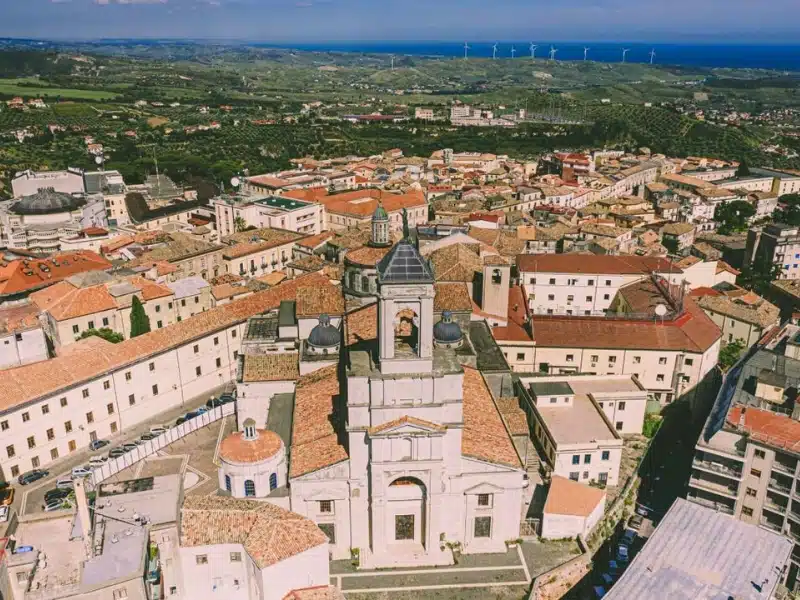
Cosenza
Cosenza, also known as the ‘City of the Bruzis’, is one of the oldest cities in Calabria. It is situated on seven hills in the valley of the Crati River, near the confluence of the Busento tributary.
The city’s origins date back to the fourth century BCE when it became strategically important for the Bruzi family. The old town, which clings to the slope of the Pancrazio Hill near the banks of the Crati, evokes its medieval atmosphere and history. Since the late 19th century, the new town has been expanding across the plain below.
In recent years, Cosenza has seen a revival of its vibrant past. The historic center is among the oldest and most beautiful in Italy, featuring monumental buildings, manor houses, churches, and narrow winding alleys that attest to its conformity.
Cosenza’s historic old town is packed with beautiful medieval and Baroque buildings including the the iconic 11th century Duomo di Cosenza on Piazza XV Marzo.
Other notable places to explore are the San Domenico Church, the Church of Sant’Agostino, and the ancient Castle of Cosenza, which dates back to the 13th century and offers panoramic views of the city and surroundings.
For more stunning views, hike to the top of Mount Pollino, located just outside of Cosenza.
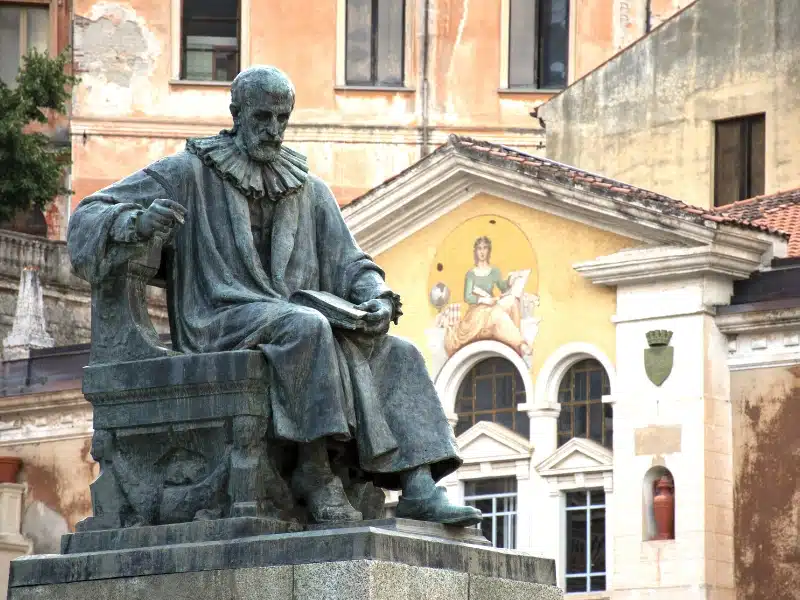
San Nicola Arcella
San Nicola Arcella is a charming coastal town located on the Tyrrhenian Sea coast that offers visitors a blend of historical heritage, stunning natural landscapes, and a relaxing Mediterranean atmosphere.
During the medieval period, San Nicola Arcella became an important coastal town due to its strategic location along the Tyrrhenian Sea. The town’s historical legacy is reflected in its ancient buildings, churches, and historical landmarks.
One of the highlights of San Nicola Arcella is the Arcomagno Beach, a stunning cove with crystal-clear waters and a natural arch formation accessible by boat or on foot through a scenic trail and nearby Dino Island, also known as Isola di Dino, is a small island known for its white cliffs and sea caves.
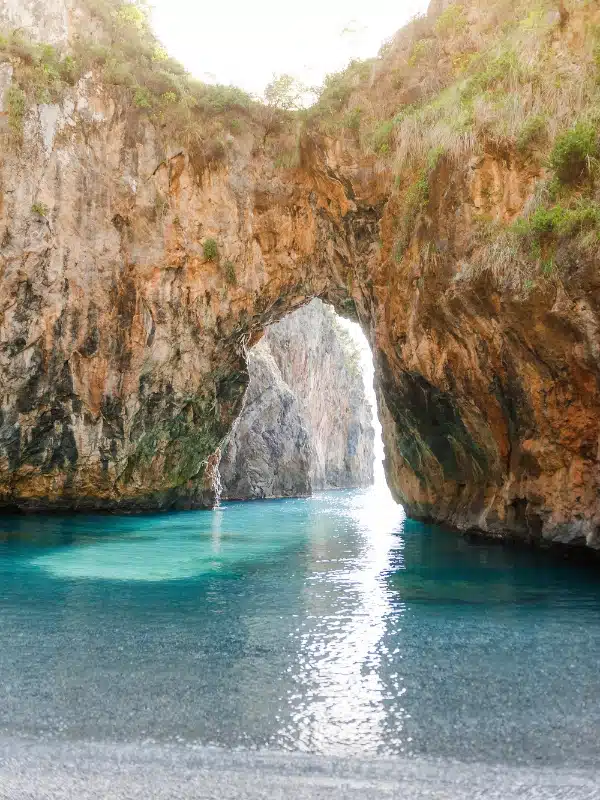
Scilla
Scilla is a captivating coastal village situated on the west coast of Calabria, known as ‘the jewel of the Costa Viola’.
This charming fishing village is reminiscent of famous spots on Italy’s Cinque Terre, with a patchwork of colored houses overlooking the calm waters of the Tyrrhenian Sea. Despite its beauty, Scilla remains virtually undiscovered by tourists.
Its location on the Strait of Messina, which connects Calabria to Sicily, offers a rich history with over 2,000 years of traditions in fishing for swordfish. According to ancient Greek legends, Scilla was home to the sea monster Scylla, one of the two monsters (alongside Charybdis) who guarded the Strait of Messina and terrorized Odysseus as he sailed the seas.
Today, Scilla is an enchanting town to visit, with charming streets to wander, a castle to explore, a sweeping beach, and extraordinary sunsets.
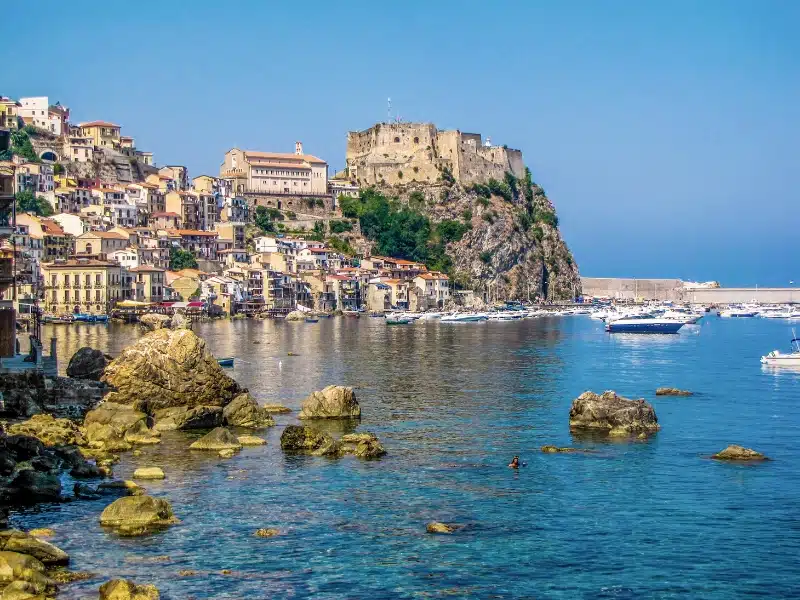
Tropea
Tropea is a picturesque town that overlooks the Tyrrhenian Sea as it juts out from the top of Italy’s toe. The stretch of land along which Tropea is located is known as the Costa degli Dei or Coast of the Gods.
Tropea’s allure is not new. Legend has it that Hercules founded the town upon return from his labors at the Pillars of Hercules, today’s Strait of Gibraltar.
Visitors will find the hero’s name gracing the main square, Piazza Ercole. However, Tropea’s history goes beyond the mythological, with discoveries of ancient Greek tombs and a Roman port in the area.
The old town perches over the sea, and Tropea’s antique palazzi are built right to the edge of the rock, which drops straight down to Tropea Beach below, providing panoramic views.
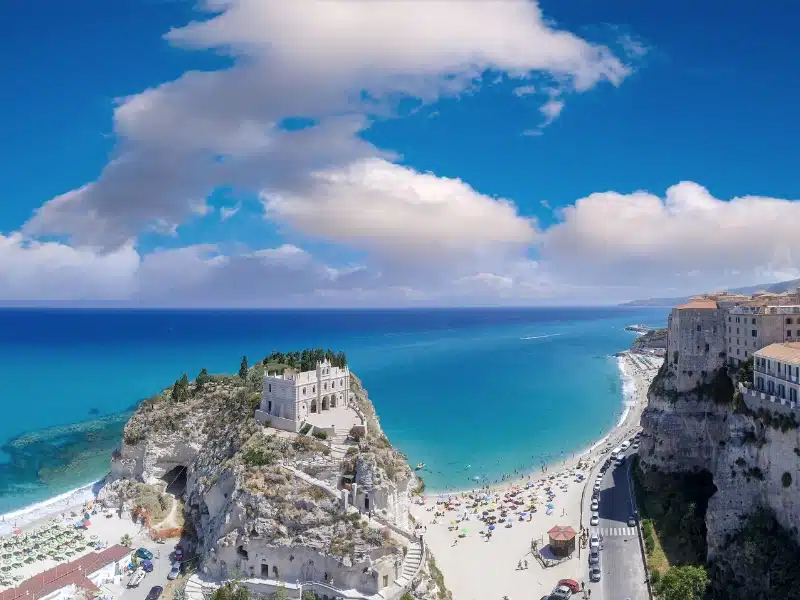
Italy Travel Inspiration
Campania
Campania is a region renowned for its mild climate, fertile land, and breathtaking landscapes, and is home to some of Italy’s most iconic tourist attractions. The territory is mostly characterized by gentle hills, the Matese mountains, that border Molise, and the rugged Irpinia area.
Amalfi Coast
From Sorento to Salerno, the incredible Amalfi Coast boasts several gorgeous towns, like Amalfi and Ravello. Yet, Positano is the best-known of Amalfi’s towns and arguably the most beautiful.
Positano has beautiful beaches, like Spiaggia Grande, Fornillo, and Arienzo and the town is a jumble of narrow cobbled streets and pretty squares. In one of the streets is the Santa Maria Assunta Church, a must-see, which features a beautiful, tiled dome.
Avid hikers will delight in the Path of the Gods, a scenic trail that offers stunning views of the Amalfi Coast. The trail starts in Bomerano and ends in Nocelle, with several vantage points along the way.
For a different perspective of the Jenga-like pastel-painted houses as they tumble towards the sea, take a boat trip and visit the Blue Grotto cave and nearby Capri for a taste of the high life!
RELATED POST: A Bucket List Amalfi Coast Road Trip
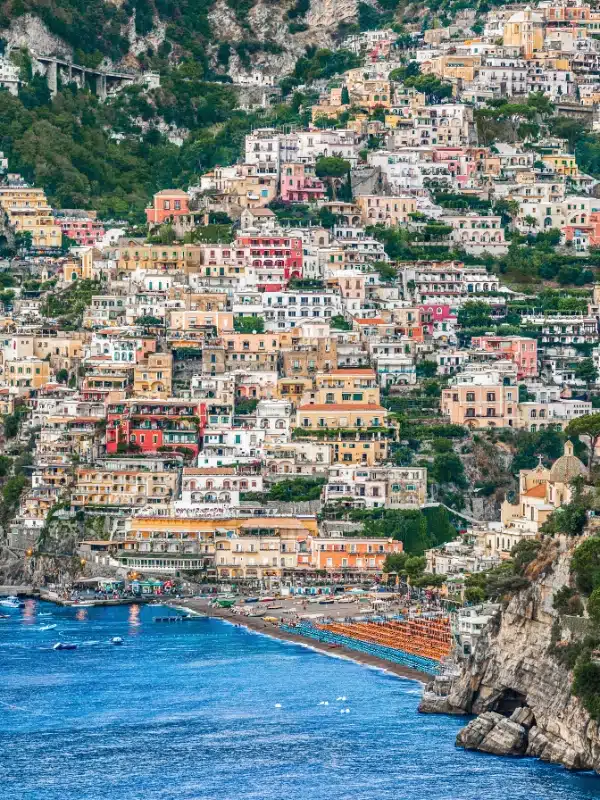
Ischia
Ischia, an island that has long been overshadowed by its fashionable neighbor Capri, is having a moment, but managing to retain its deep authenticity.
The island is part of a trio of islands known as the Phlegraeans off Naples, which also includes Capri and Procida. However, Capri’s popularity with day-trippers often makes the island a victim of over-tourism. In contrast, Procida is the smallest of the three and has never received much attention, although it is worth a visit for its pastel villages and artisan workshops.
Ischia’s charm lies in its position between being both newly fashionable and authentic. Although there is development, particularly in the hotel sector, there are still simple bars, beach clubs, and harbors that are more likely to dock fishing boats than super yachts.
The island is home to several delightful villages, such as Forio, Ischia Ponte, Sant’Angelo, and Casamicciola, and boasts natural thermal spas, lush vineyards, and deserted coves, making it easy to see why it is quickly becoming one of Italy’s up-and-coming destinations.
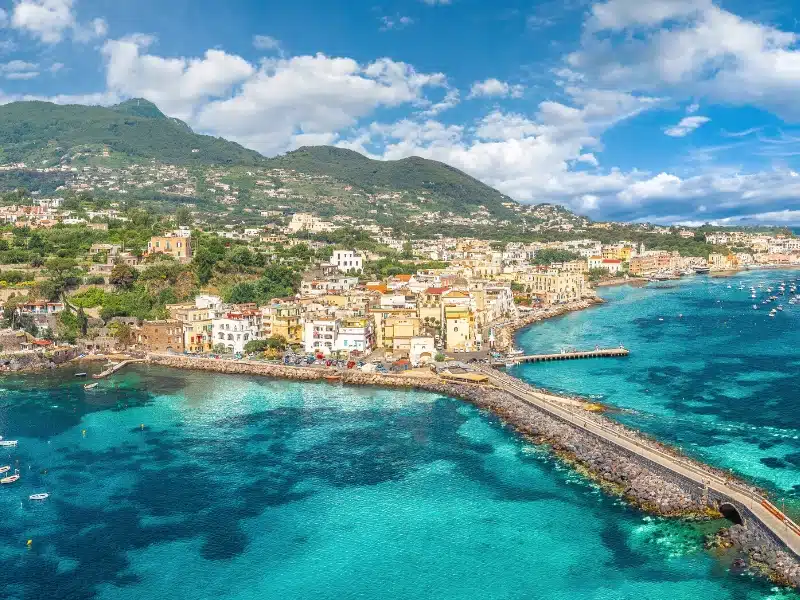
Mount Vesuvius
Vesuvius is one of three live volcanoes in Italy, the other two being Mount Etna in Sicily and Stromboli, which is one of the Aeolian Islands and has produced some of the continent’s largest volcanic eruptions.
It sits in the crater of the ancient Somma volcano, overlooking the Bay and the City of Naples, and is best known for the catastrophic eruption in 79 CE, which destroyed the Roman cities of Pompeii and Herculaneum. Despite its last eruption occurring in 1944, Vesuvius still poses a significant threat to the cities surrounding it, particularly the bustling metropolis of Naples.
Nevertheless, you can take a steady hike up Vesuvius for around 30 minutes before you plateau out onto the rim. The rim is very clearly defined with a path about 75% of the way around and much of the route is lined with wooden barriers to stop you from getting too close to the edge.
Don’t expect to see fire and brimstone spewing out of the crater, but you will see plenty of steam and can feel the heat coming off the crater in waves. The panoramic views of the Bay of Naples are spectacular.
RELATED POST: How to Visit Pompeii & Vesuvius in One Day
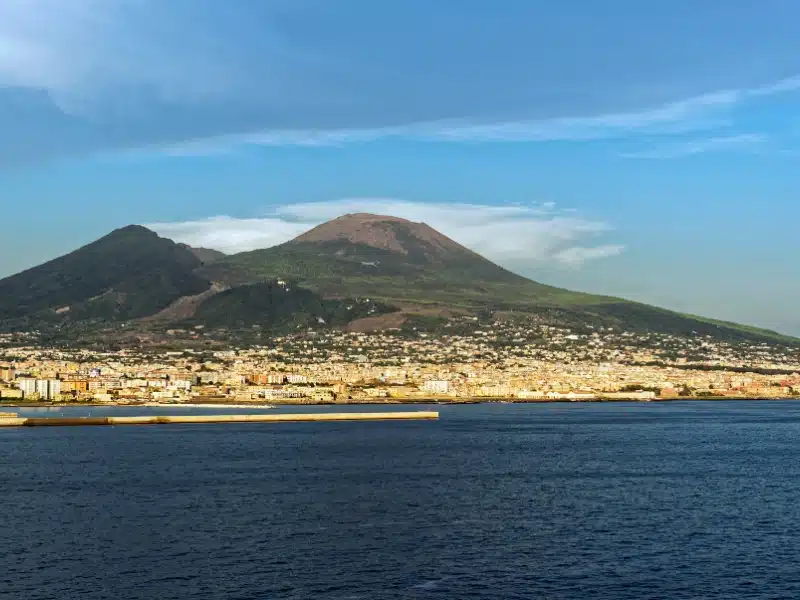
Naples
Naples, or Napoli for Italians, is a bustling port city with a population of 4.4 million inhabitants, known as ‘Neapolitans’, and is the third largest city in Italy.
Despite its lively and chaotic nature, Naples boasts a long and rich cultural history dating back 3000 years. While the city may initially appear dilapidated and neglected, it is home to many beautiful churches, museums, and monuments and the historic center is a UNESCO site.
As the birthplace of pizza, espresso, and football legend Diego Maradona, who played for SC Napoli, Naples has been a popular destination for city trips for years and is becoming more popular every year. Despite its increasing popularity, Naples offers a more authentic and less touristy feel than Rome or Venice.
Naples is home to many Neapolitan churches in Baroque and Renaissance styles, each with its own atmosphere and identity. The Duomo di Napoli, the city’s cathedral, houses the treasures of patron saint San Gennaro. Three times a year, his clotted blood liquefies, and if it doesn’t happen, it is believed to bring disaster upon Naples.
History enthusiasts will enjoy the National Archaeological Museum, which houses ancient artifacts from the Roman Empire and the ancient Catacombs of San Gennaro beneath the city. You can also visit the Royal Palace of Naples, built in the 17th century, to see marvelous frescoes, art, and furniture.
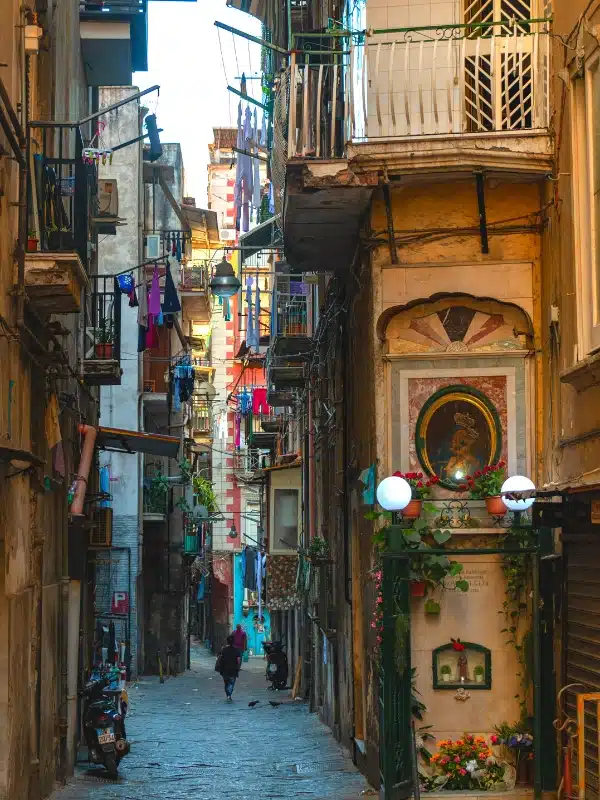
Pompeii
The Archaeological Park of Pompeii is located at the foot of the Vesuvius volcano.
The original city was founded around the 8th century BCE by the Osken people. While many cities in Campania were built by Greek settlers, Pompeii was an exception due to the fertile soil around the volcano.
Pompeii was conquered several times throughout its history, first by the Etruscans in the 6th century BCE, and in the 5th century BCE, it was conquered by the Samnites, like the rest of Campania. These conquests came to an end when the Romans defeated the Samnites in the 4th century BCE.
The Romans fortified the city of Pompeii, but the inhabitants did not take kindly to the conquest and revolted. The Romans did not let this go unpunished and in 81 BCE, Pompeii, having been besieged by the Romans, became an official Roman province.
In 62 CE, a major earthquake struck, causing chaos and severe damage to the city. Some of the inhabitants of Pompeii fled, but some stayed in the city to rebuild it, not knowing that this earthquake was the prelude to a much greater disaster.
Pompeii was completely covered in a meter-high layer of ash from a huge Vesuvius eruption in 79 CE. During the eruption, around 20,000 people lived in the area and it was also a much-visited holiday destination for the Romans. Although a large number managed to flee the city, over 1,000 human remains were found in the Pompeii ruins alone.
The volcanic eruption pushed cities like Pompeii and Herculaneum into oblivion. Finally, in the year 1599, the city was found during the digging of a canal and later in the 18th century, efforts were made to remove the two cities from the ash layer.
Today, Pompeii is one of Italy’s most popular tourist attractions and also a thriving site for historians and archaeologists, partly because of the ash layer, meaning everything that remained in the city has been extremely well preserved.
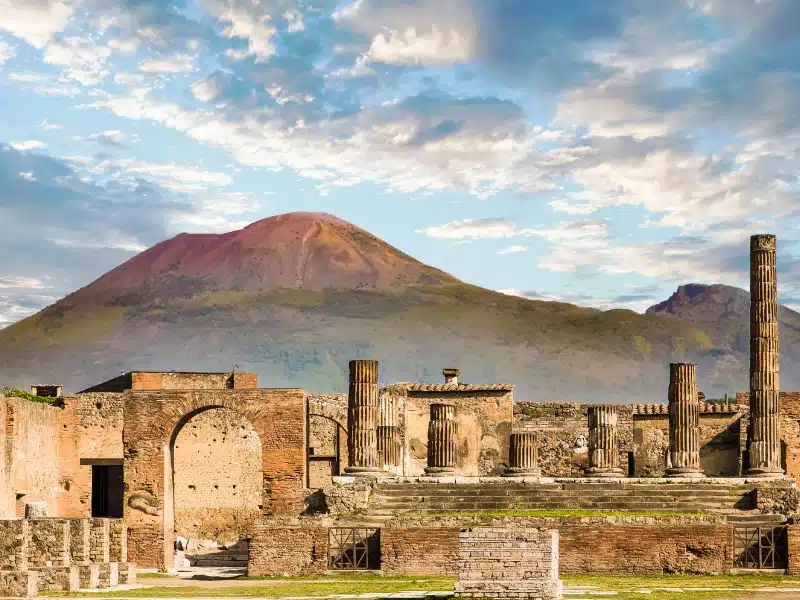
Molise
The smallest region in South Italy, Molise is an area rich with historical and cultural heritage, and an abundance of locally produced food and wine. This Italian hidden gem boasts a magnificent coastline with awe-inspiring cliffs, stunning natural reserves, and picturesque villages that appear to be frozen in time.
Campobasso
The capital of Molise, Campobasso is situated in the high basin of the Biferno River, surrounded by the stunning Sannio and Matese mountains.
The city is renowned for its skilled blade craftsmanship, including scissors and knives, a tradition that dates back to the 14th century, locally grown succulent pears, and delicious Scamorza cheese.
One of the city’s main attractions is the Castello Monforte, which was built in 1450 by the local ruler, Nicola II Monforte, on Lombard or Norman ruins. The castle has Guelph merlons, a style of crenelated parapet, and is situated on a commanding point, where traces of ancient settlements (including Samnite walls) have been discovered.
The magnificent old town of Campobasso is situated around the castle and its walls. It is renowned for its intricate network of alleys and winding stairways, resembling a labyrinth of ancient stone buildings that still maintain their distinctive characteristics. These include small courtyards or internal gardens, as well as rich decorations, friezes, and stuccoes, dating back to the noble families who once owned them.
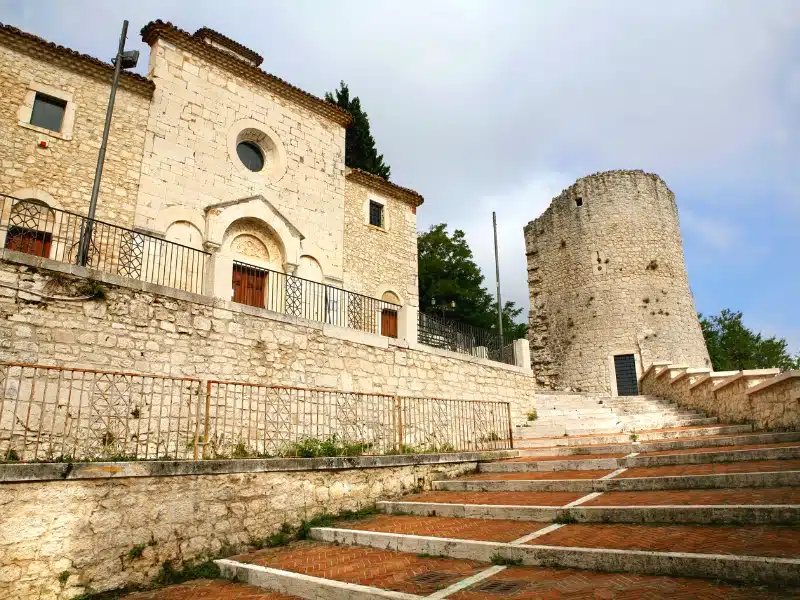
Isernia
Isernia is a small sleepy town surrounded by hills that are renowned for producing exquisite red, white, and rosé Italian DOC wines.
Despite enduring several episodes of destruction, Isernia has managed to preserve a significant number of archaeological remains and the historical center still maintains the same layout as the Roman cities, featuring a large raised market street, surrounded by numerous alleys and small squares.
The town is a photographer’s dream, with narrow atmospheric alleys capturing rays of light that bounce of buildings in every shade of terracotta from the palest putty to the deepest baked orange clay.
Don’t miss the 14th century Duomo di Isernia, a Roman Catholic cathedral dedicated to the Apostle Peter. The cathedral is situated in the Piazza Andrea in the old town and stands on the site of an Italic pagan temple of the 3rd century BCE.
Its present appearance is the result of many renovations, occasioned partly by numerous earthquakes and partly by building refurbishments.
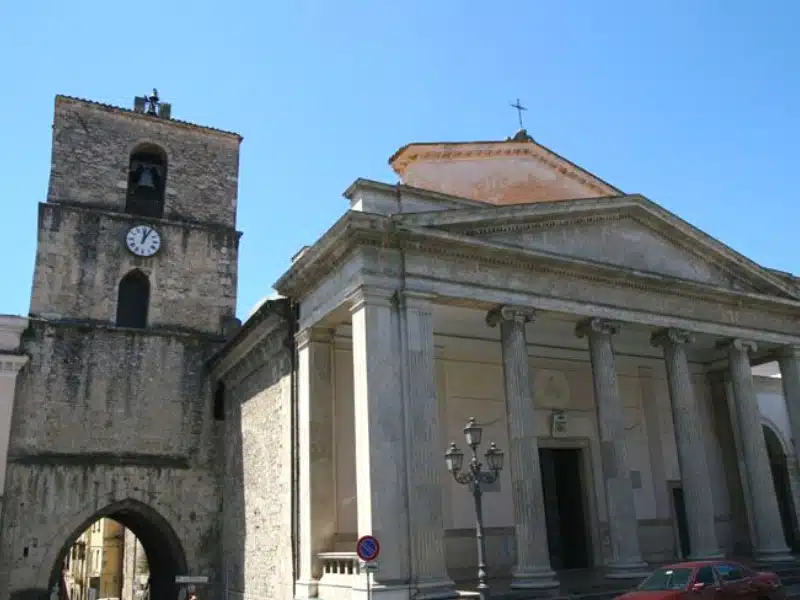
Termoli
Originally a fishing port, Termoli is on the Adriatic coast and today is a popular holiday destination with Italian families.
The old town has been meticulously restored and is a genuine walled community that protrudes into the sea. Many of the houses have been rebuilt and painted in a range of pastel colors, adding to the town’s charm.
In the central square, visitors can find the 12th century cathedral, and nearby is the Castello Svevo of Termoli, the most prominent structure in the town.
Built by Count Robert I of Loritello during the middle ages and extensively renovated during the rule of Frederick II after being damaged in an attack by the Venetian fleet, the Castle was part of a fortification system, which included a wall surrounding the entire city, of which only a tower remains visible today.
Termoli’s resorts are renowned for their pristine beaches and the relative purity of their waters, and the town makes a great base from which to explore the hilltowns of Larino, Casacalenda, Montorio, and Montelongo, which still preserve a rural way of life that is disappearing in other, more developed, parts of Italy.
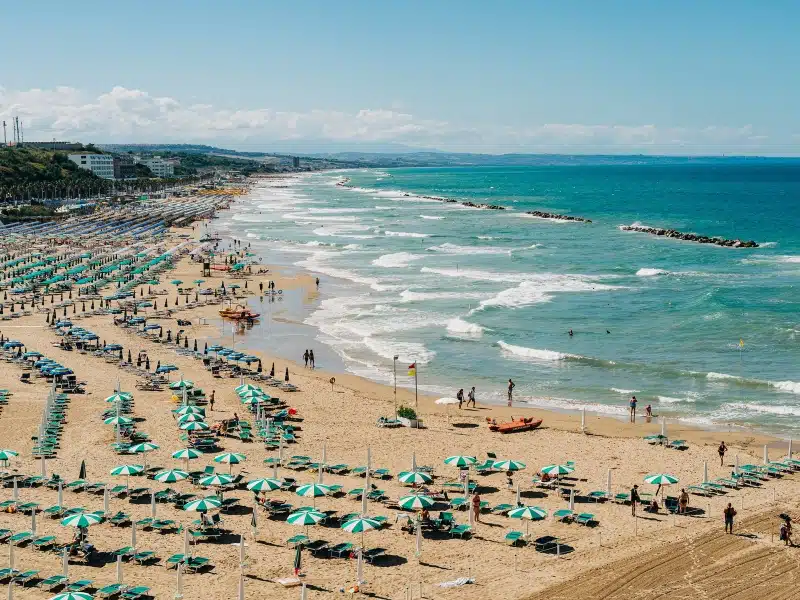
Puglia
Probably the best known of the regions in Southern Italy, Puglia, or Apulia, is the heel of Italy’s boot. Blessed with rolling countryside, miles of gorgeous beaches, vibrant towns, and delicious local olive oil, Puglia epitomizes the best of Italy without the crowds. Whether you’re a sun worshipper, culture vulture, or foodie, Puglia will tick all those boxes and more.
RELATED POST: Puglia Road Trip: The Best 7 Day Itinerary + Map & Tips
Alberobello
For many, UNESCO Alberobello is the pinnacle of a Puglia trip, home of the famous Alberobello Trulli houses; a distinctive circular building with a conical roof. Trulli are built from local limestone stacked without using mortar and are considered one of the best examples of vernacular architecture in Europe.
The walls and openings of these round houses are generally whitewashed and the stone roof tiles often have religious, pagan or magical symbols painted on them. The origins of the Trulli are obscure although the name is also applied to ancient ground tombs found in the Roman countryside.
We found the Trulli site a little Disneyesque and overcrowded with day trippers. We much preferred the rural Trulli houses found in the Murge dei Trulli; they somehow seemed to sit better in the natural surroundings.
A walking tour is a good way of understanding the history and architecture of the Trulli houses and seeing some of the off-the-beaten-track highlights.
Once you’ve finished admiring the trulli, head for Vino & Amore, a fabulous deli with a tasting room in the non-trulli part of town. The owner is passionate and enthusiastic about the local produce and will give you spot-on suggestions and descriptions for your lunch. Go there and eat lots of fabulous local produce and drink a glass of local wine. You won’t regret it.
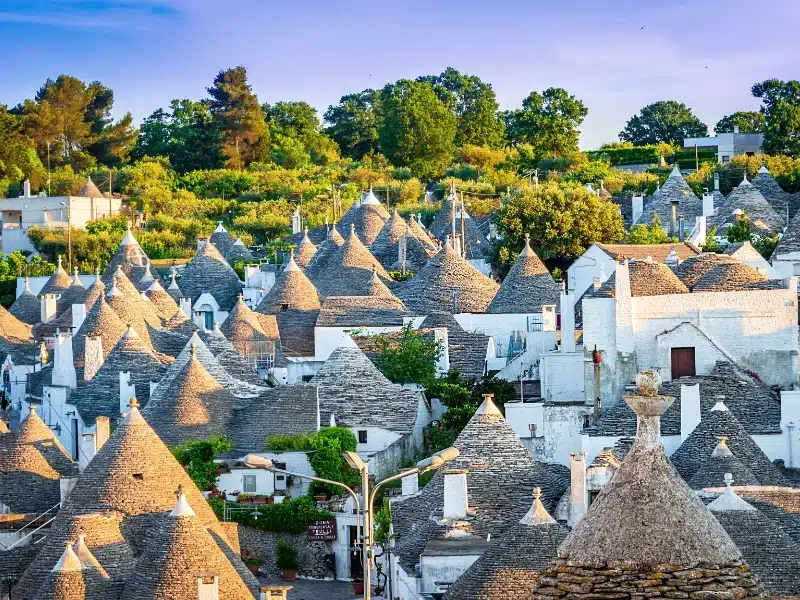
Gallipoli
Gallipoli is a charming small port town on the west coast of the heel. Head for the small island across the Ponte Papa Giovanni II, past the medieval Gallipoli Castle, and you’ll find a vibrant and busy tangle of streets and alleys. There is an old-world feel here and you can easily imagine what it must have been like 50 years ago.
Get off the main arteries and into the mass of houses, churches, and small family-run restaurants to experience the real Gallipoli. Whitewashed walls with the plaster chipping off and washing hanging from balconies covered in bougainvillea and wisteria just add to the ambiance.
There are numerous small churches and chapels, all with extraordinary doors, often carved from one piece of wood. Gallipoli is a photographer’s dream, every alley has an angle, every corner a surprise. You could wander for hours and never get lost – just keep going and eventually, you’ll get to the sea!
Head for the Basilica Cattedrale di Sant’Agata. The cathedral sits on the highest point of the island and has an incredibly ornate exterior. The interior is also ornate but where the outside is softened by the color of the stone and natural light, the inside is dark and feels a little forbidding, but the craftsmanship and dedication that goes into such buildings never fail to impress.
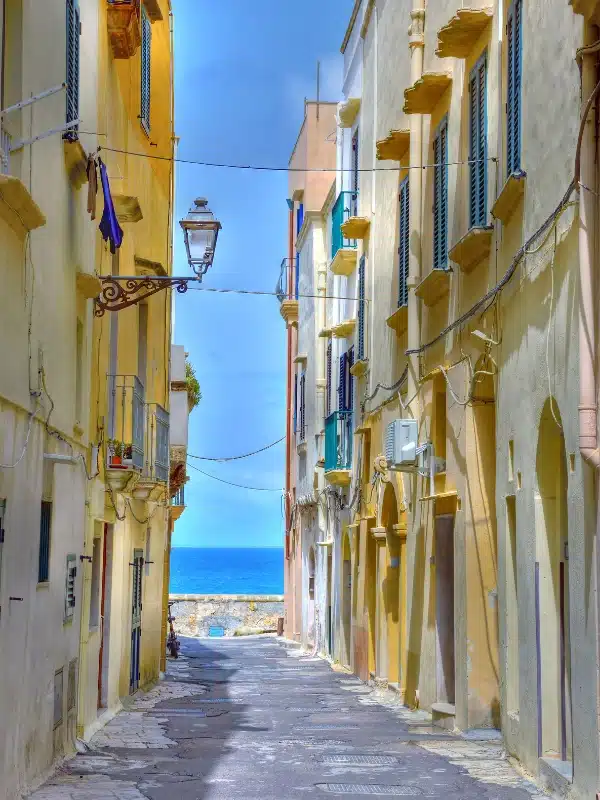
Lecce
Lecce is often called ‘the Florence of the south’, due to the beautifully carved stone Pietra di Lecce, used in much of the 17th century Lecce Baroque style buildings.
Head for the old town, to the west of Castello Carlo V. Coming from the castle, you will arrive in the Piazza Sant’Oronzo, complete with a partially visible Roman amphitheater and a pretty dodgy 1970s clock tower which rather spoils the effect!
A central square is a great place for lunch, spending an hour or so with a tasty pizza and a glass of local wine means you can absorb the beauty of the pale Pietra di Leccastone at your leisure.
Stroll along Via Vittorio Emanuele for shops, gelaterias, and cafés before arriving at the magnificent Piazza Duomo which not only houses the Duomo but the Palazzo Vescovile, a 70m campanile and a seminary, built by Giuseppe Zimbalo, known as Lo Zingarelli or ‘tiny gypsy’ in the 1600s.
You will have to pay and entrance fee to visit the Duomo…sometimes you can see too many churches, but the medieval crypt in this one is worth the entry fee. Studded with over 100 columns in serried ranks, the crypt is beautifully simple, the columns carved intricately and so differently to the fussy Baroque style in the cathedral above.
Further along Via Vittorio Emanuele, you will find paper-mâché workshops, Lecce’s other claim to fame.
Other must-sees in Lecce are Porta Rudie, the 18th century city gate through which everyone who entered the city in ancient times would have passed; Santa Croce, the church built between 1549-1679 has a stunning rose window by Zimbalo and Chiesa del Rosario said to be Lo Zingarello’s finest work, with an ornate and detailed exterior.
If you’ve had enough of churches and religious buildings, wander the back streets of the old town not forgetting to look up at the fabulous architecture, and then head to one of Lecce’s beaches, like Punta Prosciutto, Torre Lapillo, or Porto Cesareo.
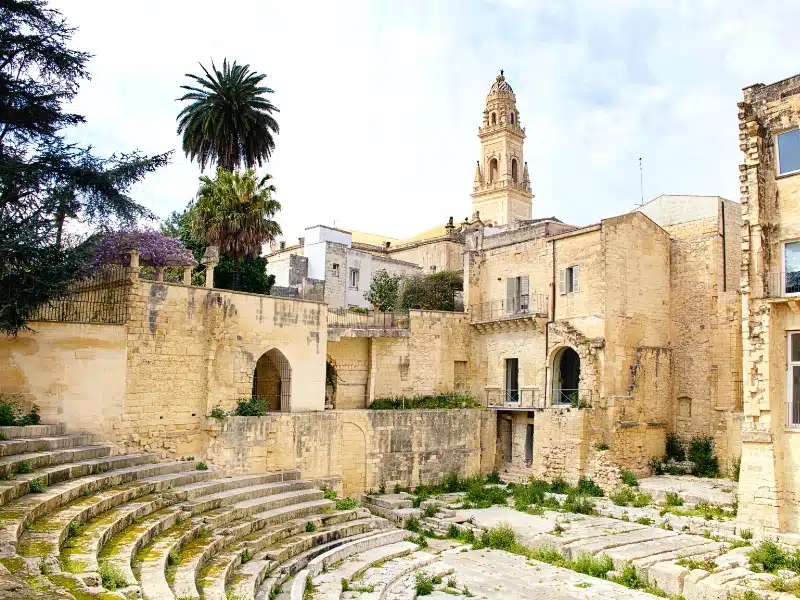
Ostuni
Built atop a hill, you’ll see Ostuni in the distance as you arrive through the lush Valle d’Itria. The so-called ‘La Citta Bianca‘ or ‘the white city’ (although the Italian is so much more romantic!) is a maze of alleys, stairs, dead ends, and glimpses of the Adriatic.
Head for the old town where the citadel at the top of the hill is still fortified by the ancient walls. This is where you will see the white walls and white-painted buildings that give the town its name, and from Corso Vittorio Emanuele II, the sunset over the Adriatic is one of the best we’ve seen.
Ostuni is one of the best places in Puglia for simply meandering, it’s a town just begging to be wandered! Make sure you wander in the morning or late afternoon after the long lunch break, this is when the town is at its most vibrant and lively.
Consider taking a walking tour here. Because of the maze-like nature of the citadel, it is easy to miss the best sights. Stop often for gelato and coffee to soak up and enjoy the atmosphere.
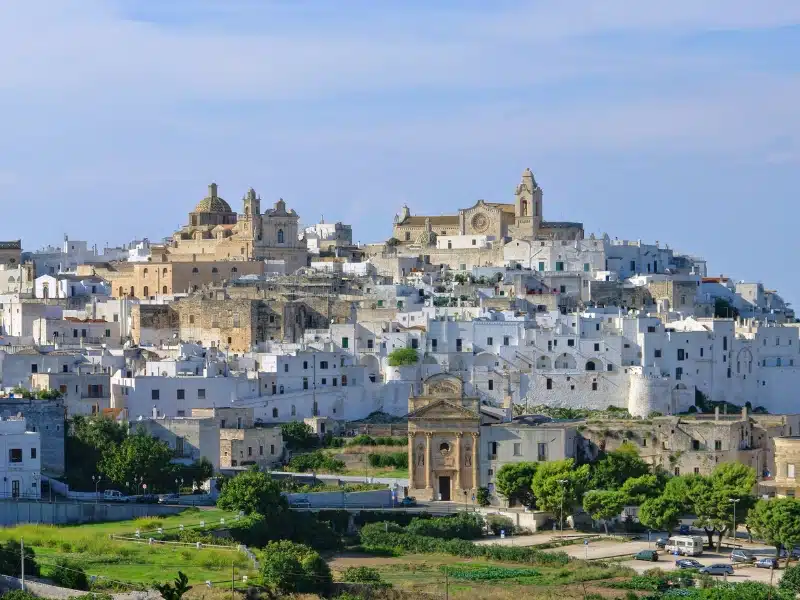
Santa María di Leuca
Santa Maria di Leuca, often referred to as simply Leuca, is at the southernmost point of the heel and sits on a promontory between the Ionian and Adriatic seas.
The Greeks called this place Leukos, meaning ‘brilliant sun’, and it was a prominent place in Magna Graecia, the name given by the Romans to the coastal areas of Southern Italy that were extensively populated by Greek settlers. Little did they know it would come to have some of the best beaches in Southern Italy and become a must-see place on any Puglia itinerary!
Leuca was a simple local fishing village until the end of the 19th century when tourists started to visit, attracted by the crystal clear waters and beautiful scenery. Many wealthy southern Italians made Leuca their summer residence and they built large and ornate villas which still decorate the seafront.
Head up to the lighthouse, which is the second most important in Italy after Genova. Next to the lighthouse sits the simple yet beautiful Basilica Sanctuary of Santa Maria de Finibus Terrae (end of the land), built to commemorate the passage of St. Peter here during his journey to Italy.
The views are stunning and sunsets draw a big crowd, so go early and wait it out with a beer if you want the best spot!
Evenings on the seafront are family-orientated and busy. There are lots of food vans selling crepes, gelato, and pizza along the promenade, as well as a number of restaurants and bars. Look out for the saltwater pool, when the surf is up, the waves crashing against it are mesmerizing.
Just above the port is the Cascata Monumentale Di Leuca, the last point of the Apulia Aqueduct, a project that was started in 1868 and was not finished until 1941. The Cascata, which is 300 steps high, is not operated often and there is no set timetable, but you may be lucky during the summer months and even luckier to see a night operation where it is spectacularly lit. Check at the local Tourist Office for information.
There are a lot of sea caves to the east of Leuca which can only be explored by boat and all along the sea-front you will see signs for boat tours. You can visit Grotta Della Poesia, the Cave of Poetry, by car from Leuca. This dramatic swimming hole is located in Roca Vecchia and is well worth a detour with your towel and swimmers in the boot of your hire car.
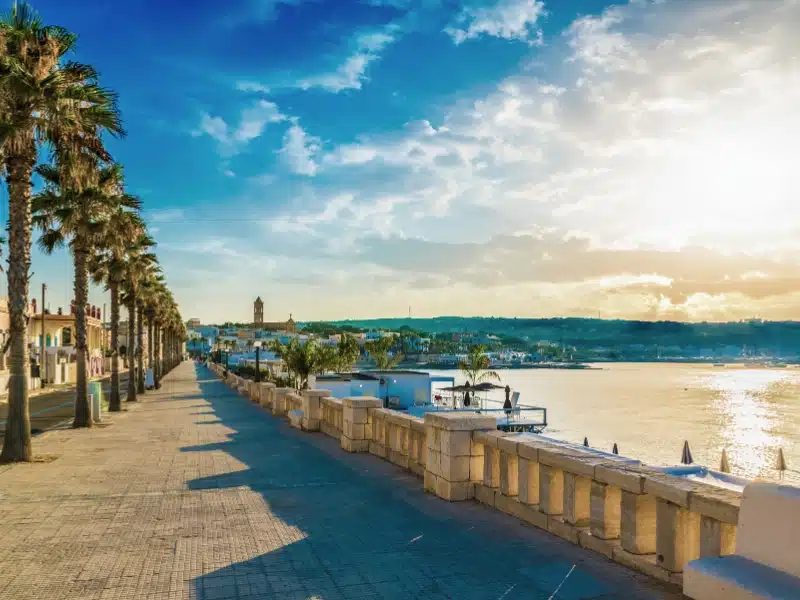
Taranto
Taranto is home to the Tarantella, Italy’s lively and graceful folk dance. It was alleged that victims of the tarantula’s bite could cure themselves by frenzied dancing which sweated out the poison.
The dance is characterized by light, quick steps, and a teasing flirt and only takes place privately in Taranto at 6am on 29th June, every year to celebrate the Feast of St Peter and St Paul. It is the only known place where the dance has survived.
The picturesque Città Vecchia is an island dividing the Mare Grande from the Mare Piccolo and was the site of the Roman citadel, Tarentum. The old town today is still laid out as it was in 967 CE.
There are now less than 1,000 people living on Città Vecchia, in a city of some 200,000 residents. The Duomo, founded in 1071, has been the object of much subsequent rebuilding and includes a catacomb-like crypt with sarcophagi and painted frescoes. Behind the Duomo is the 11th century San Domenico Maggiore with its high, double-approach Baroque staircase.
The impressive Castello Aragonese, the huge castle built by Frederick of Aragon in the 15th century, dominates the eastern corner of Città Vecchia.
Wander the streets, soak up the atmosphere and people-watch to your heart’s content, then head for the lively fish market for lunch. Held in a magnificent Art Deco building, you can buy and eat the fabulous and abundant shellfish, for which Taranto is famous.
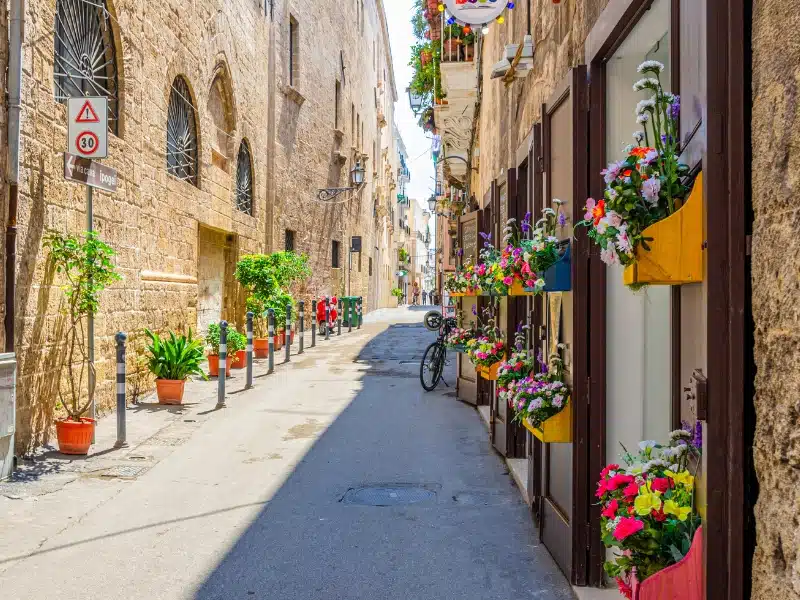
Sicily
Sicily is a gem of an island. Rich in Greek and Roman architecture, with stunning Baroque towns dotting the landscape, incredible natural wonders, and a beguiling capital city, Sicily has a wealth of experiences for you to discover and explore.
RELATED POST: Sicily Road Trip – Itinerary, Tips & Map
Agrigento
South of Agrigento town, the Valley of the Temples has an incredible entrance. Perched along the top of a ridge, the temple ruins are literally lined up and waiting for you to explore.
Start early before the tour buses and day-trippers arrive and spend an idyllic morning with the UNESCO World Heritage site to yourselves. Marvel at the fact that you can walk through and around the temples and ruins and touchstone that was quarried and chiseled thousands of years ago.
The rediscovery of this ancient site began towards the end of the 18th century when the first European travelers reached Sicily and discovered an unexpected and vast archaeological heritage.
The highlights are the Temple of Concordia, built around the 5th century and located along the Via Sacra. One of the best-preserved temples, the name Concordia comes from a Latin inscription found near the temple itself.
The Temple of Heracles is the oldest. Much of the temple was destroyed by wars and natural disasters and today has only eight columns left. The Temple of Castor and Pollux, the twin brothers born to Jupiter and the Queen of Sparta, has only four columns left and has become the symbol of Agrigento.
Not far from the Valley of the Temples is Scala dei Turchi or ‘stair of the Turks’, so called because marauding Turkish pirate ships were known to find shelter in the bay.
On first inspection, the cliffs of Scala dei Turchi seem too perfect and too white to actually be real. But real they are and made of soft limestone and blinding white marl, shaped, smoothed, and buffed over millennia by the sea and wind to look like a giant meringue, rising up from an impossibly blue surrounding sea.
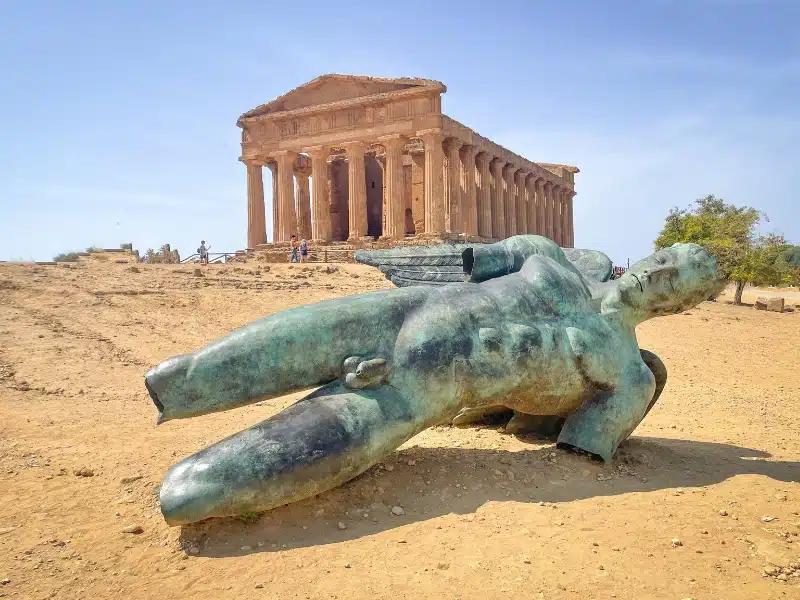
Cefalù
Cefalù, recognized as one of the most beautiful villages in Italy, is situated on the northern coast.
The town is dominated by a monumental rock rising to a height of 270 meters, which was already known to the Phoenicians as the promontory of Hercules. The Temple of Diana, a megalithic building linked to the cult of water, stands on the rock and is accompanied by a nearby cistern dating back to the 5th century BCE.
The historic quarter of Cefalù lies in the shadow of a towering bastion and is clustered around the Duomo, a colossal cathedral commissioned by Ruggero II the Norman. The outsized proportions of the Basilica are amplified by the ancient megalithic walls, of which evidence remains along the Giudecca cliffs and at the ancient Porta Terra, now Piazza Garibaldi.
Cefalù’s pretty beaches are some of the most stunning on the island, featuring sandy shores and romantic rocky coves, perfect for diving into the crystal-clear waters, and the walk through the ancient gate of Porto Pescara to Spiaggia del Porto Vecchio is a real Instagram moment.
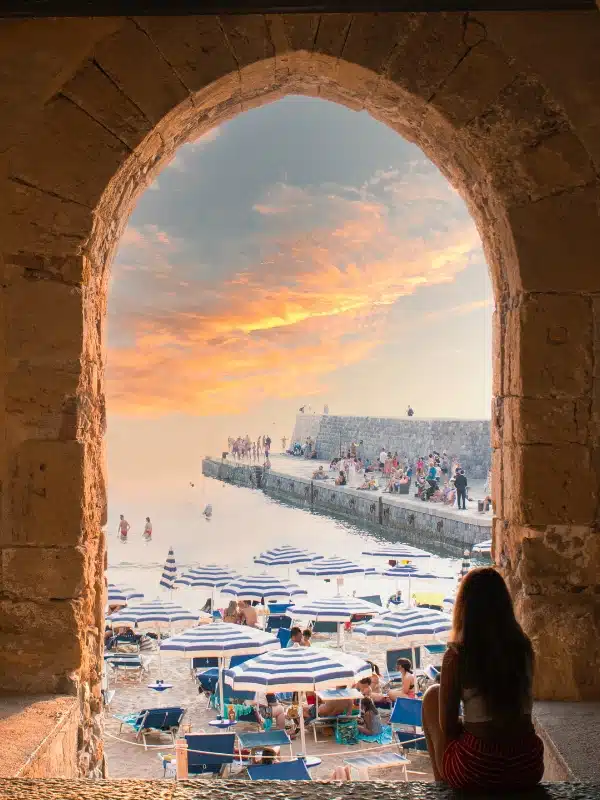
Mount Etna
UNESCO listed Mount Etna is Sicily’s biggest natural wonder and Europe’s largest and most active volcano, standing a mighty 3,350m high. After Kilauea on Hawaii, Mount Etna is considered the second most active volcano in the world.
If that doesn’t put you off, you can get to the summit of Mount Etna, look deep into her craters, and hear the rumbling magma stirring. It’s like a moonscape at the top, with sulfur swirling around the ash-covered landscape, and views that are often above the clouds.
Getting to the top of Mount Etna involves a cable car, a specially adapted bus, and hiking for the 400 meters or so of the ascent with a specialist vulcanologist guide. The sense of achievement and wonder at the top, as the guide shares a flask of local wine with you, is well worth the effort of getting there!
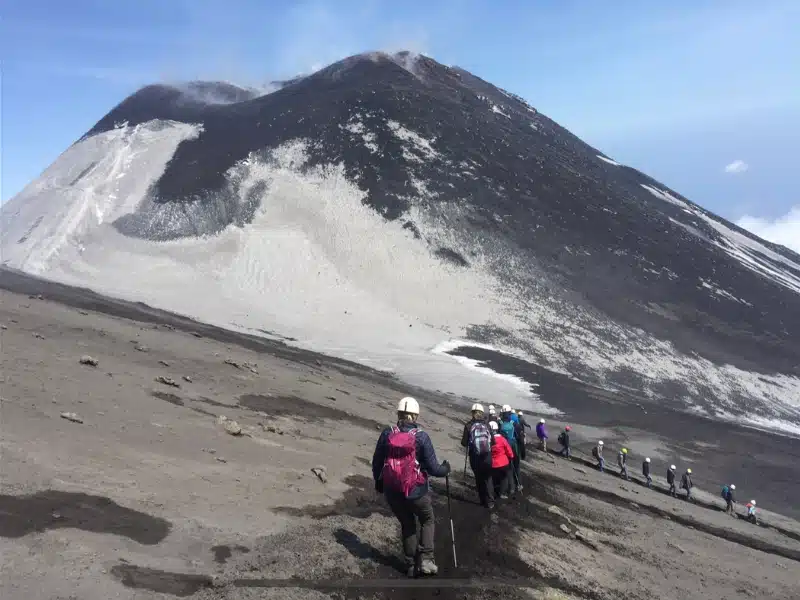
Palermo
The most complex of all the cities in southern Italy, Palermo has been caught between West and East for millennia. With dazzling buildings, Arab-Norman architecture, hidden corners, and chaotic markets, any visit to Palermo is exhilarating.
You must visit the food market which is on every day and situated in the area around Via Porta Carini. Here you can buy street food, fish, meat, fruit, vegetables and pretty much everything else you can imagine.
You can stop for a coffee and people watch, choose your fish and meat and have it cooked in front of you, to be eaten on a ramshackle table in the open air, or simply wander and take in the colors, sounds, and smells of this fabulous market.
Must sees include Catalan-influenced Palermo Cathedral; the Palatine Chapel inside the Palazzo dei Normanni, famous for its mosaics and gold decor; the Arab-Norman churches of San Giovanni degli Eremiti and La Martorana; and Fontana Pretoria in what was one called the ‘Squate of Shame’ due to the nudity of the statues!
RELATED POST: One Day in Palermo – Itinerary, Map, Tips & Guide
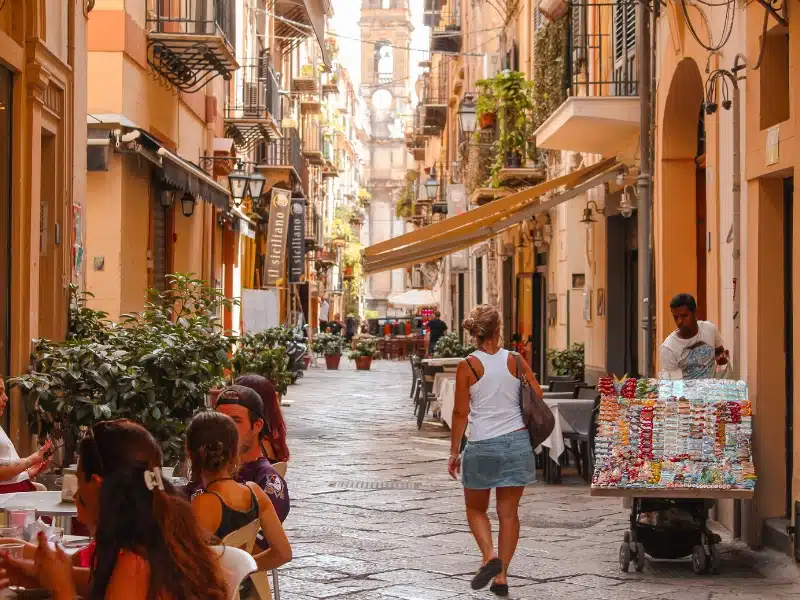
Segesta
Segesta is a glorious temple and Roman amphitheater, incredibly well-preserved and picturesque. Easily accessible on a day trip from Palermo less crowded than the Valley of the Temples, and set in beautiful rolling countryside, the Temple of Segesta is a must-see on any Southern Italy itinerary.
A magical place, the setting between lush rolling hills, with far distant views to the sea and mountains, is perfection. The surrounding fields, with their exact rows of silver-green olive trees and vines, are archetypal Italian and just add to the atmosphere of Segesta.
The architecture of both temple and amphitheater is breathtaking. The temple is particularly interesting due to its unfinished nature and complexity. It is impressive that it has survived as intact as it is, given that until just a few years ago, visitors were able to walk inside and around the columns.
RELATED POST: Segesta Sicily: Absolutely Everything You Need to Know
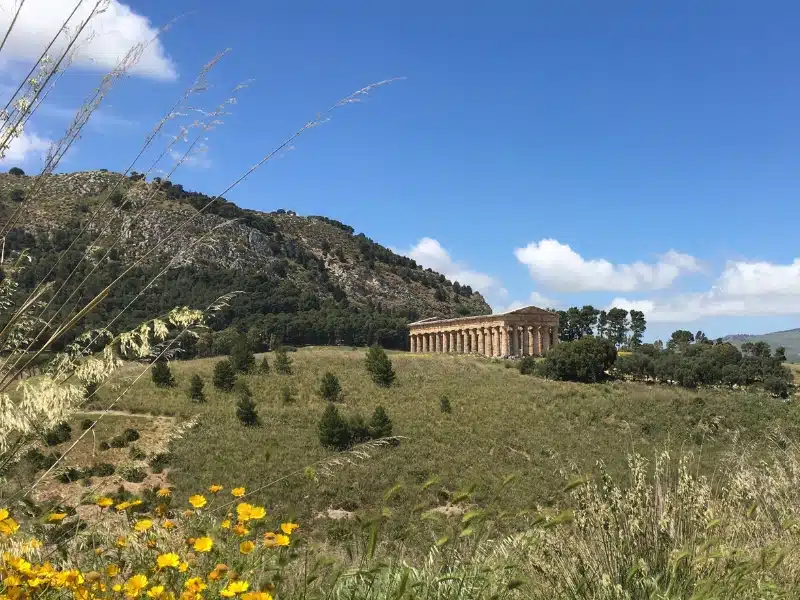
Syracuse
Syracuse (or Siracusa) is a city on the Ionian coast of Sicily known for its ruins. It has a vibrant and modern café culture, with lots of great bars and restaurants, and is perfect for an afternoon strolling the pretty streets, window-shopping, and admiring the architecture.
Head for the old town of Ortigia, on an island connected to the new city by the Ponte Umbertino. Cross from new to old and you’ll find yourself in another world, with magnificent ancient churches, a temple, local markets, and even a castle.
Make sure to visit Piazza Duomo to see the Cathedral, a fascinating mix of pagan temple and Christian church. The Duomo stands on the ruins of a temple dedicated to Athena, built in 480 BCE. Behind the Baroque facade of the cathedral, Doric columns from the original temple are still visible.
Another must-see is the Fonte Aratuse, a fountain originating from a freshwater spring that creates a small semi-circular lake. Here there are fish, geese, and ducks, and the only naturally occurring Papyrus in Europe.
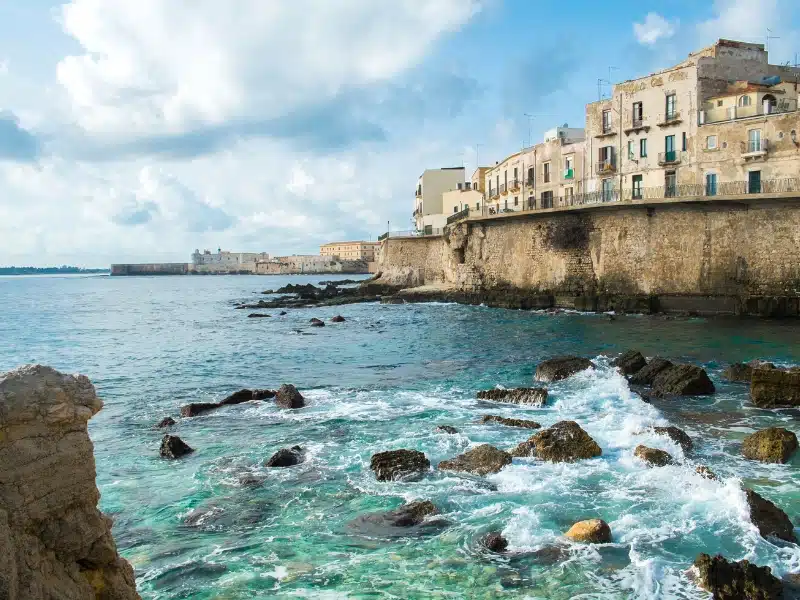
Are you looking for more travel ideas? Check out these top posts…
16 of the Best Travel Destinations in January
Our 60 Before 60 Travel Bucket List
The 16 Best Second Cities in Europe You Shouldn’t Miss
Adventure Travel Bucket List: 15 Epic Experiences in Europe
Travel Trends 2026: The Year of Mindful Escapes and Meaningful Journeys
The Ultimate Europe Travel Bucket List: 15 Classic Experiences to Inspire Your Next Trip
Love it? Pin it!

